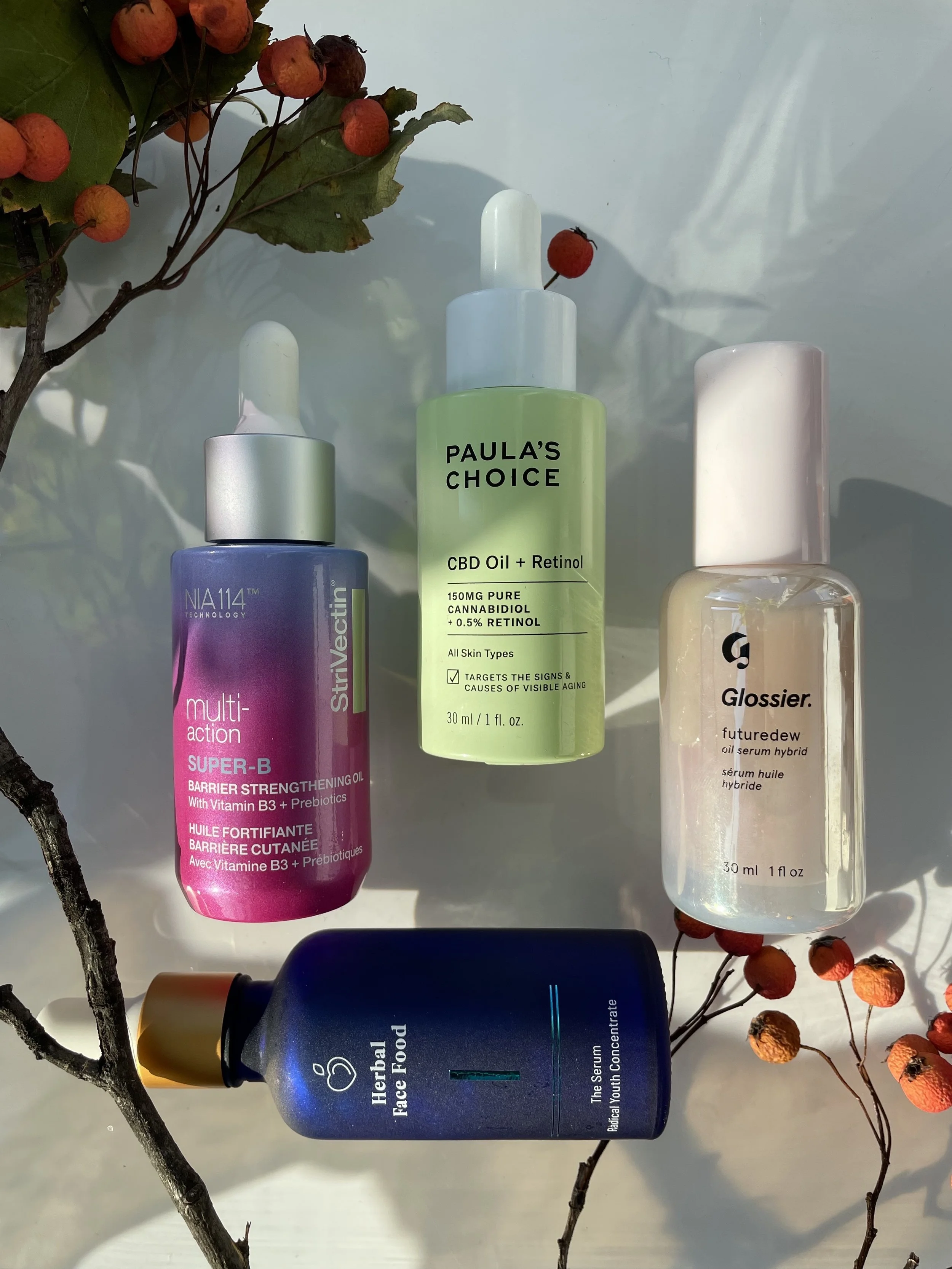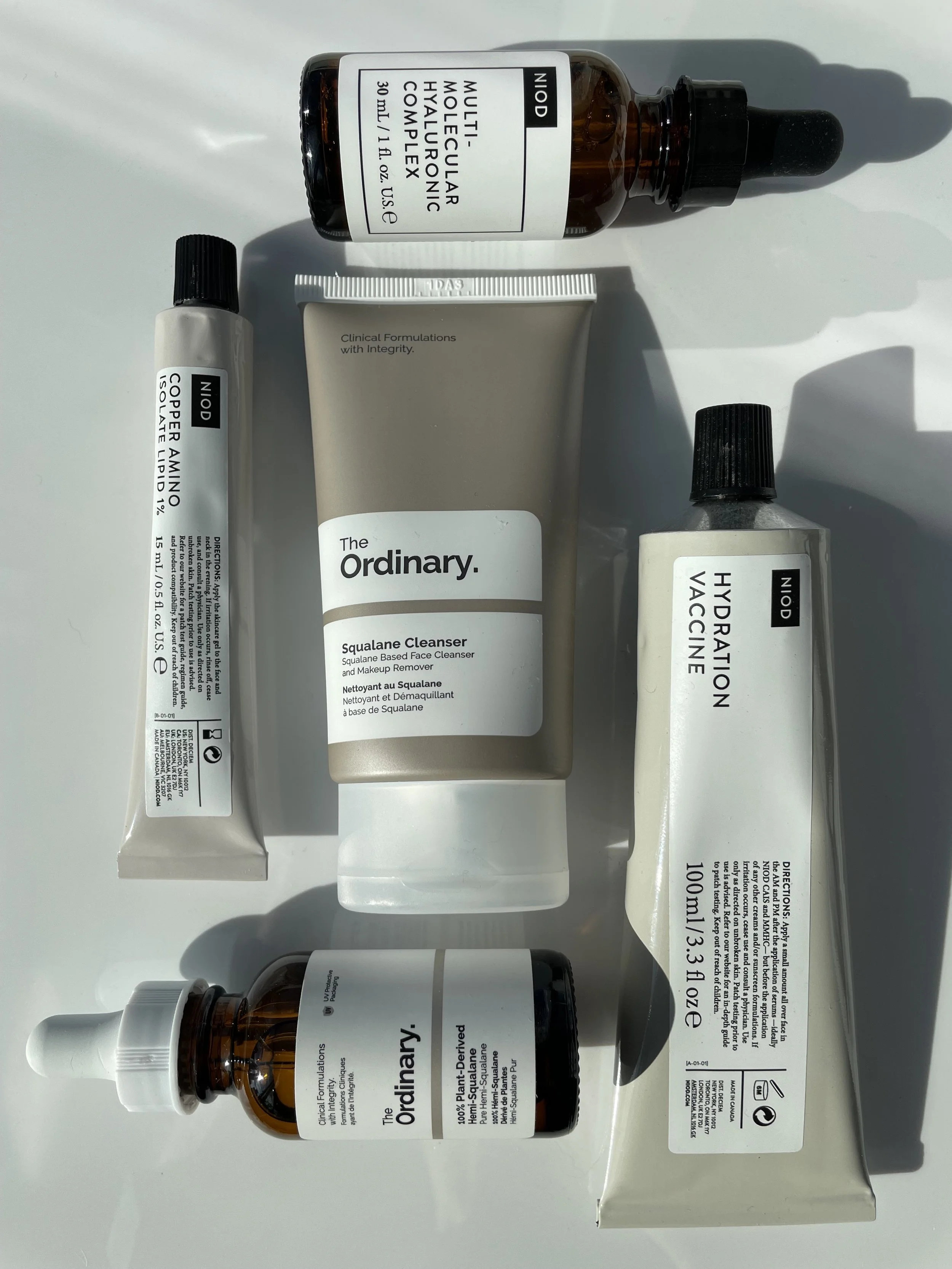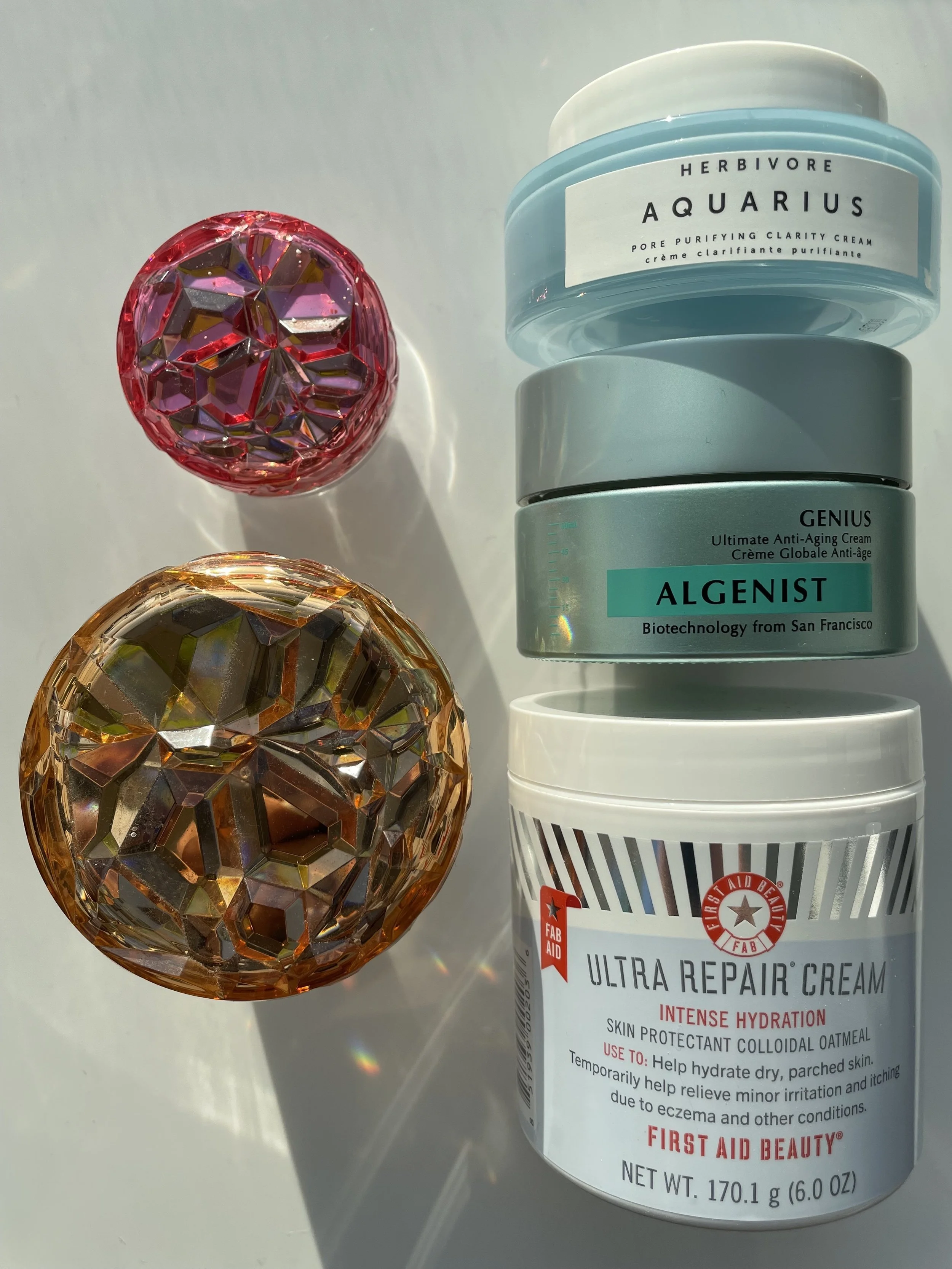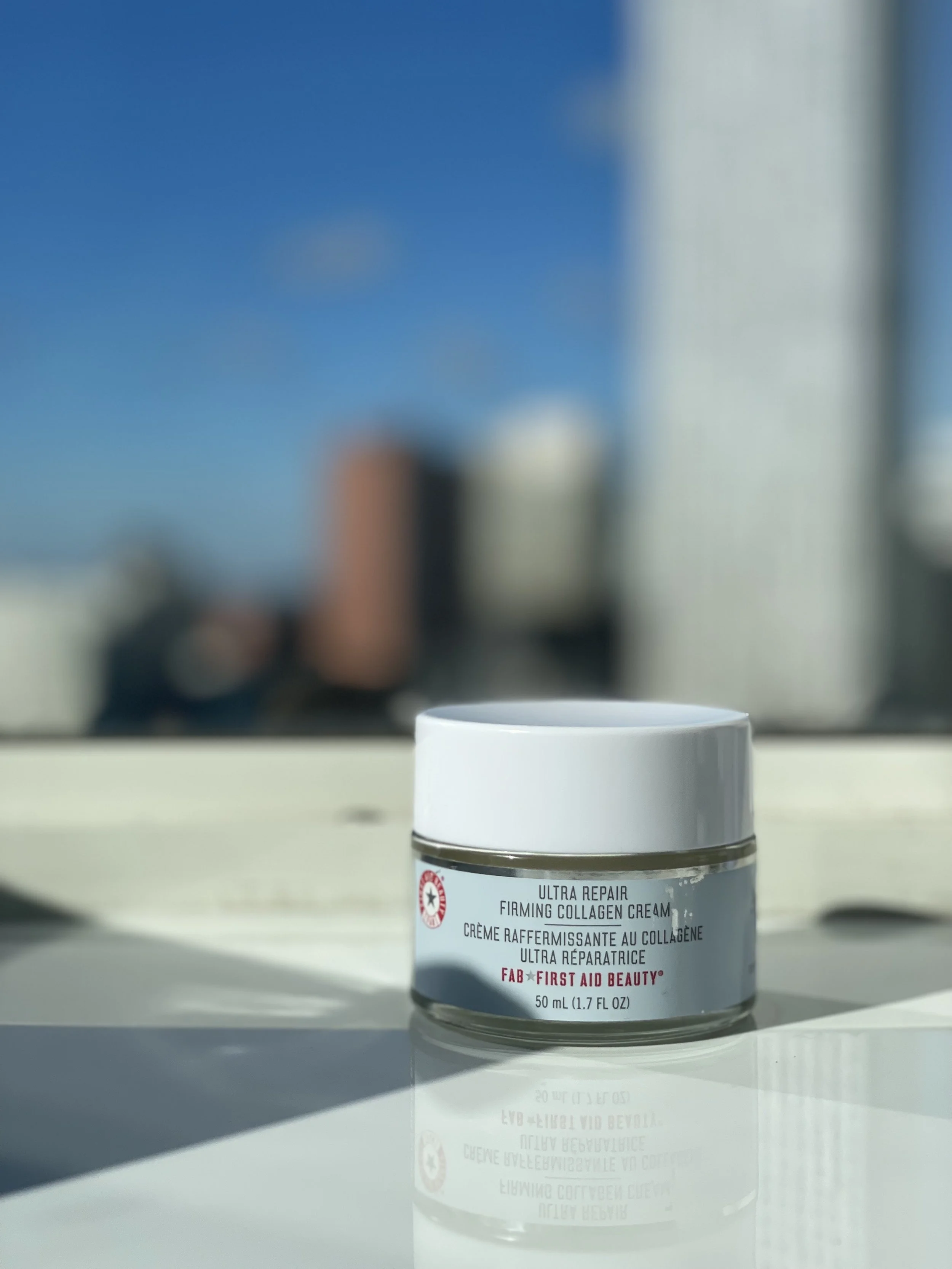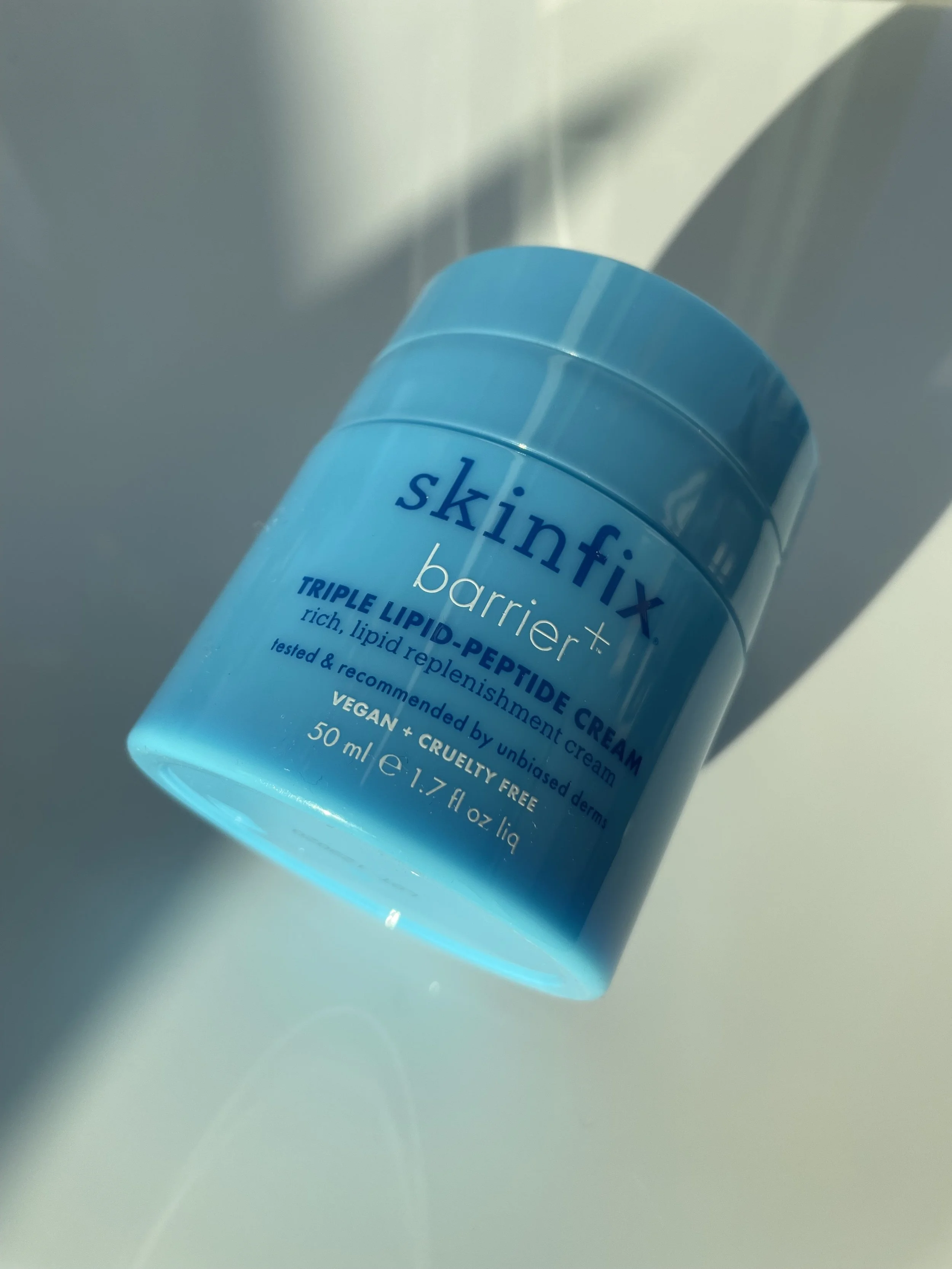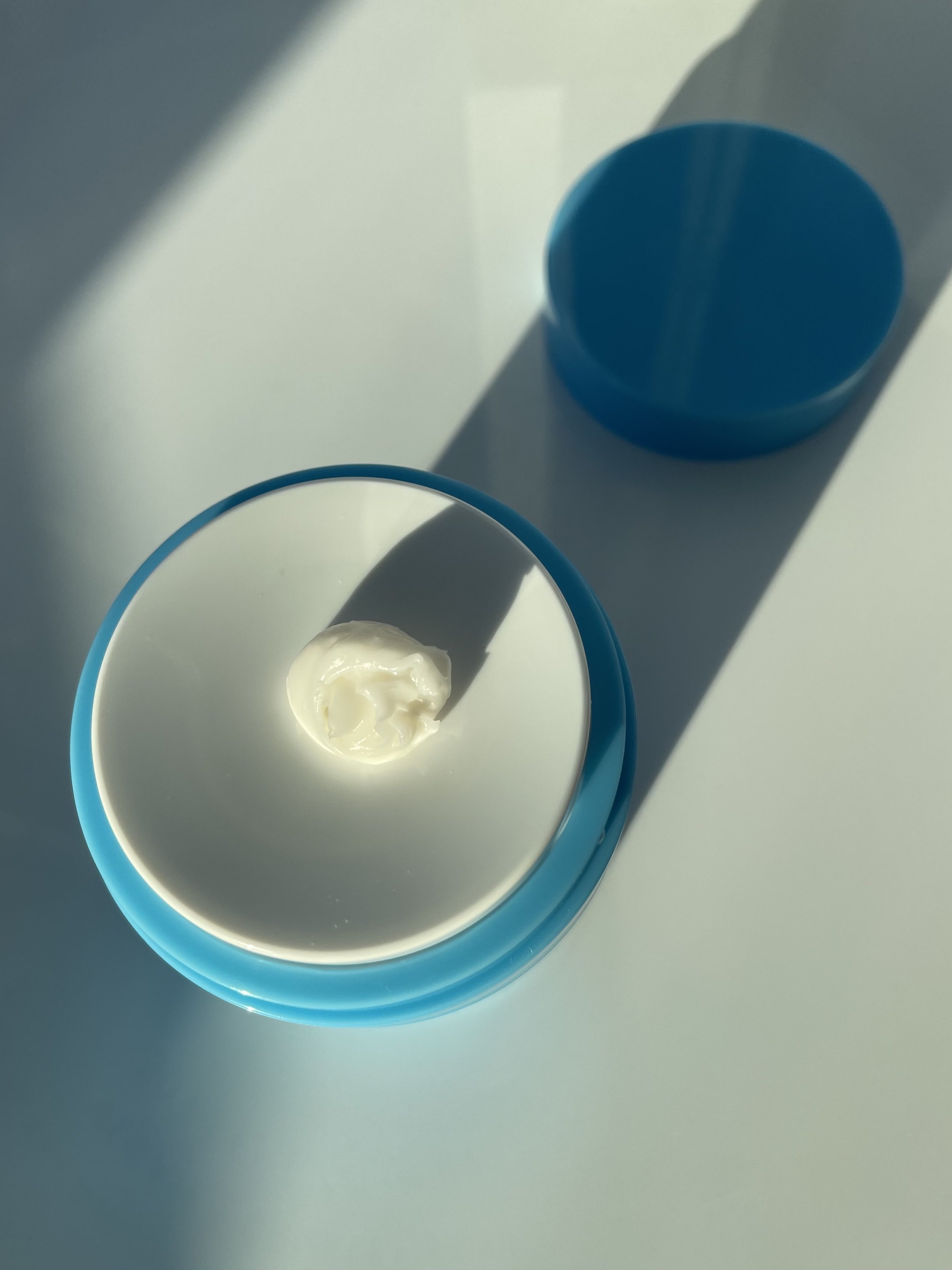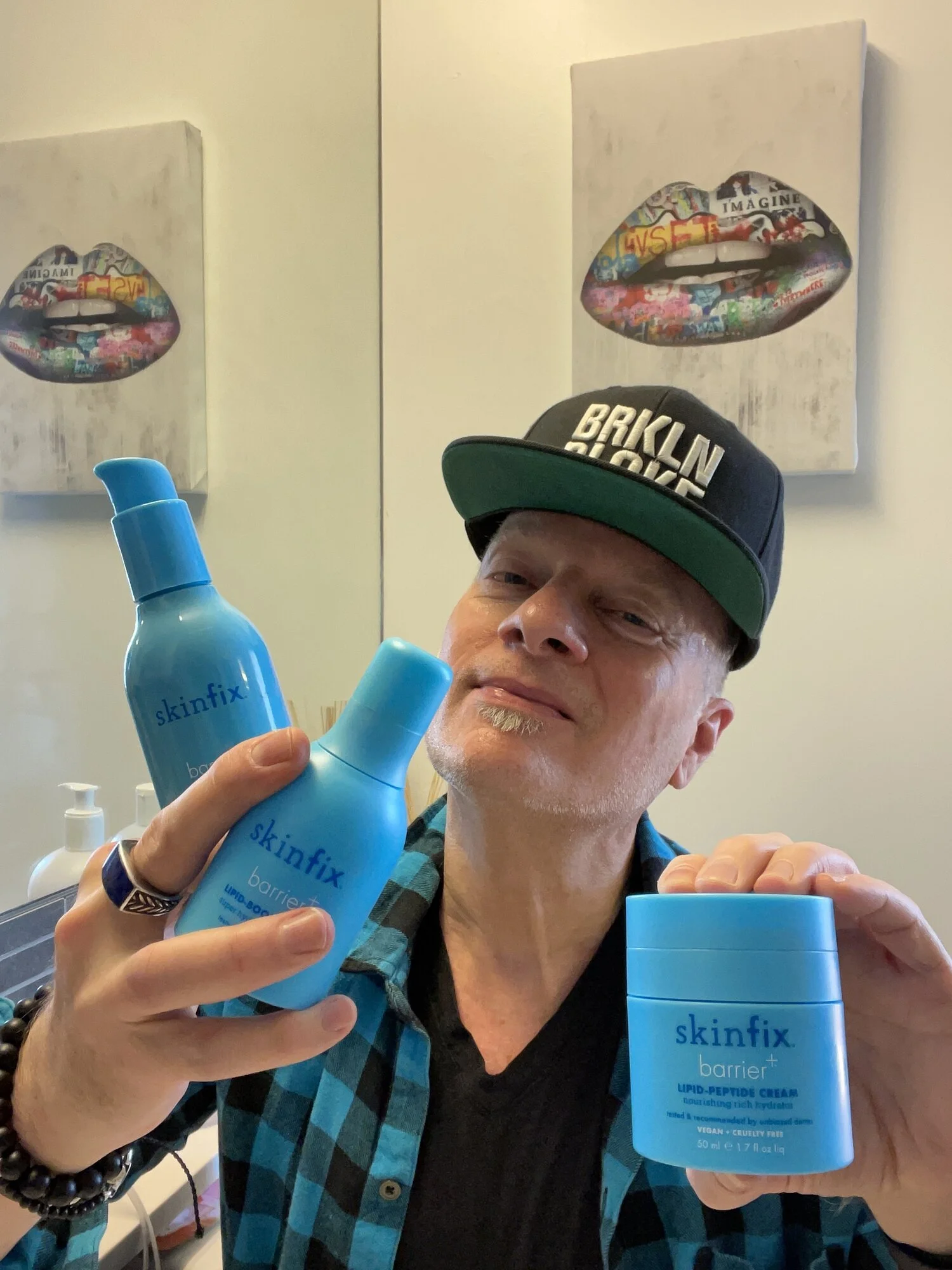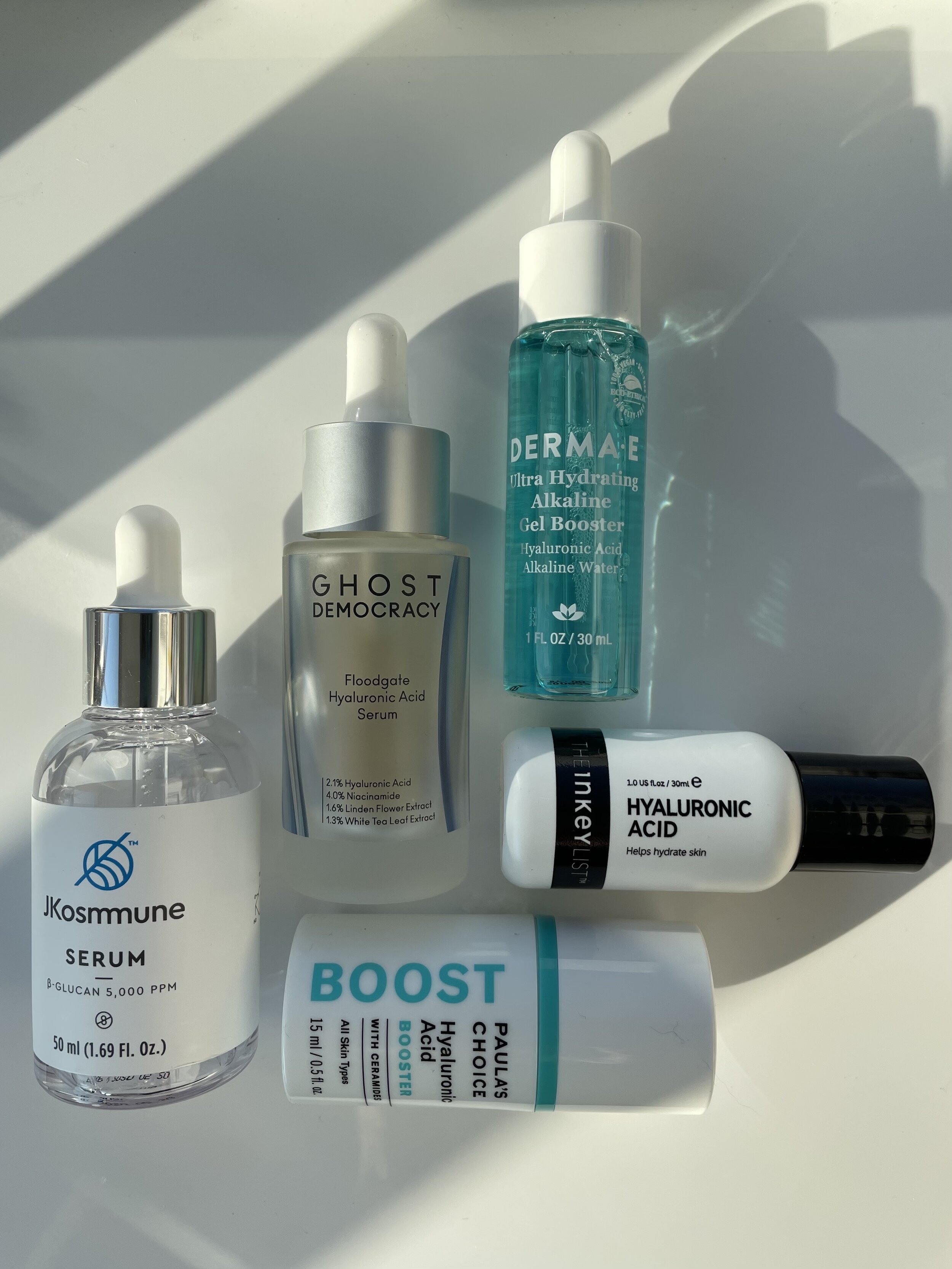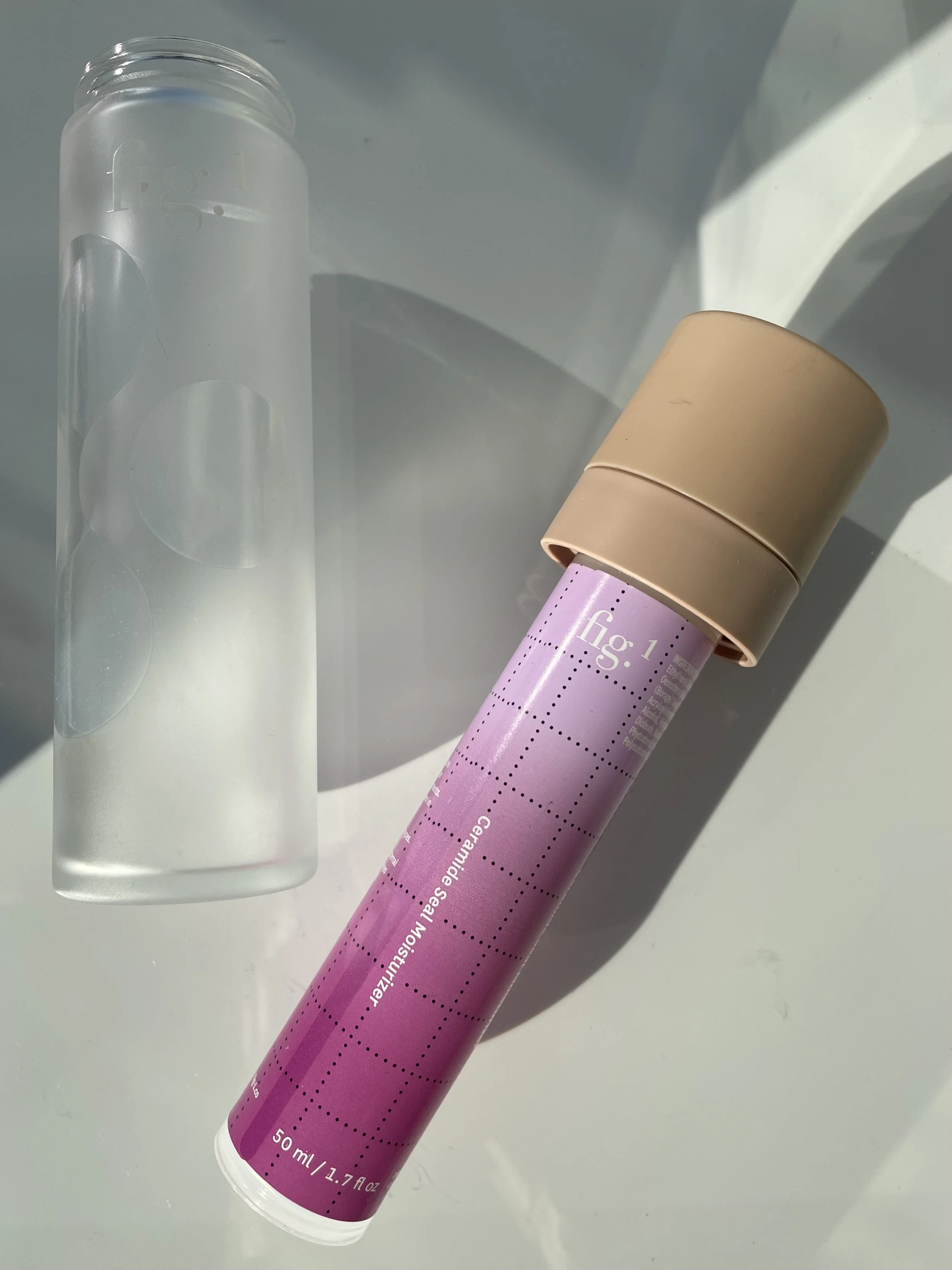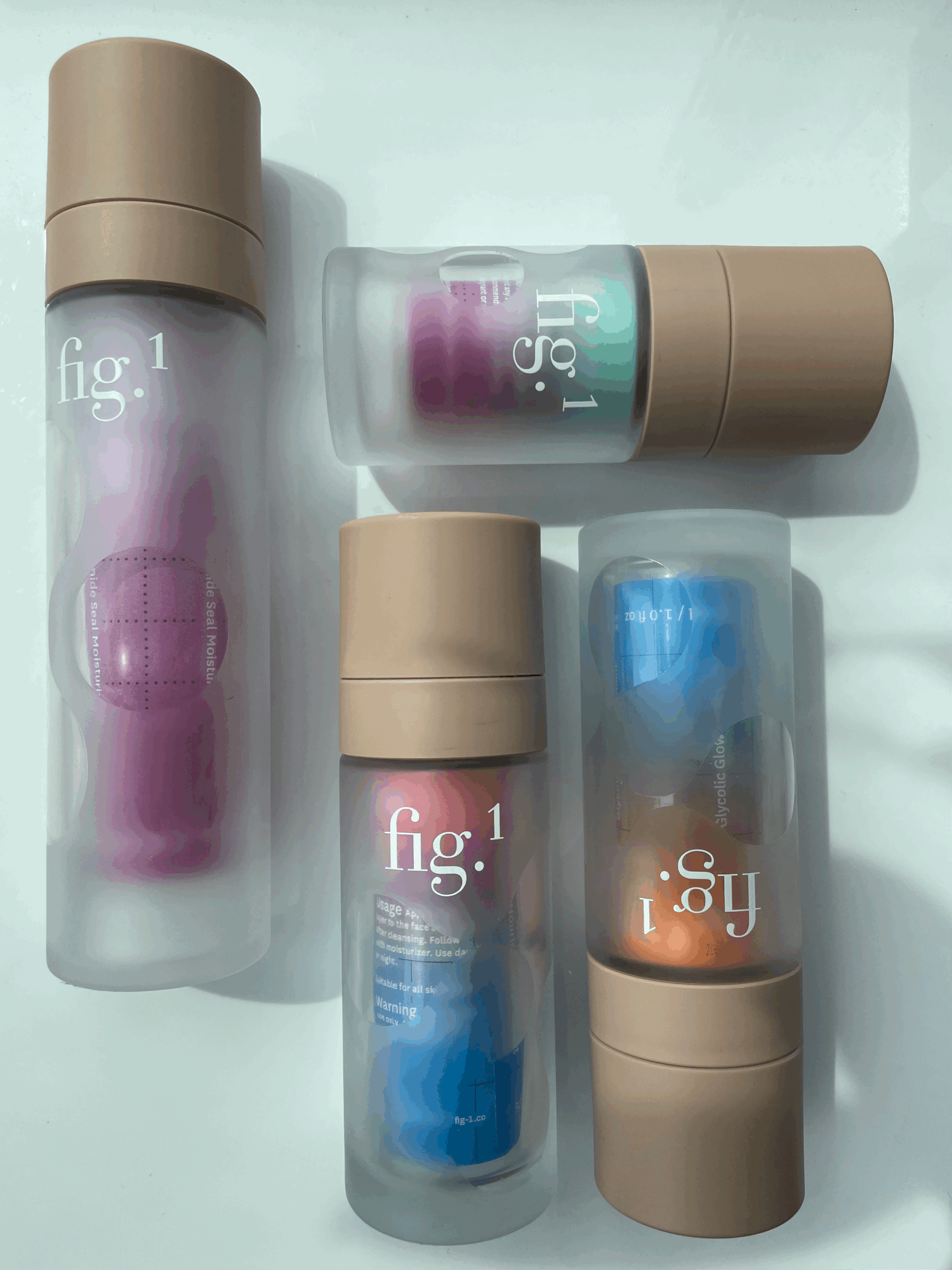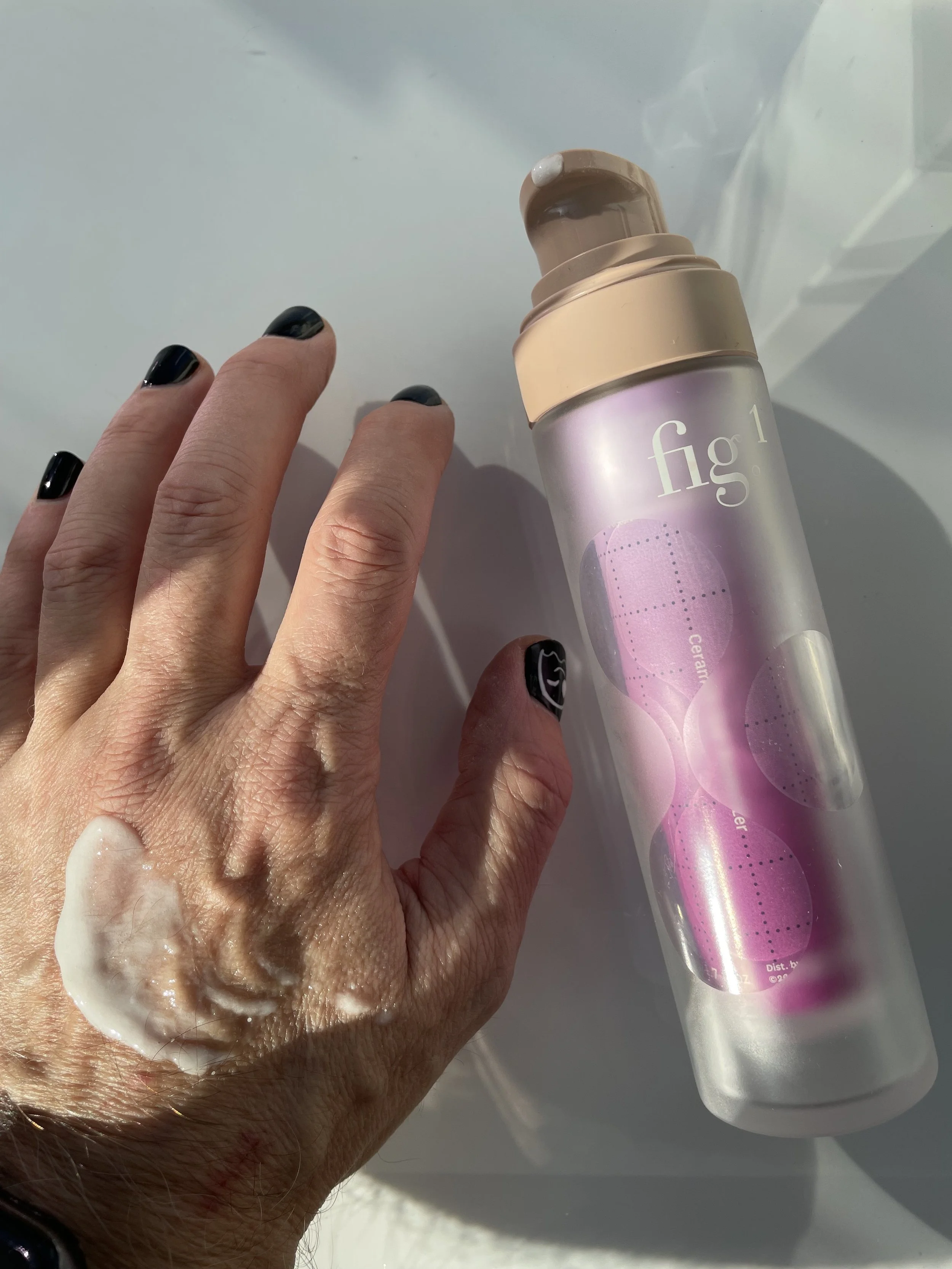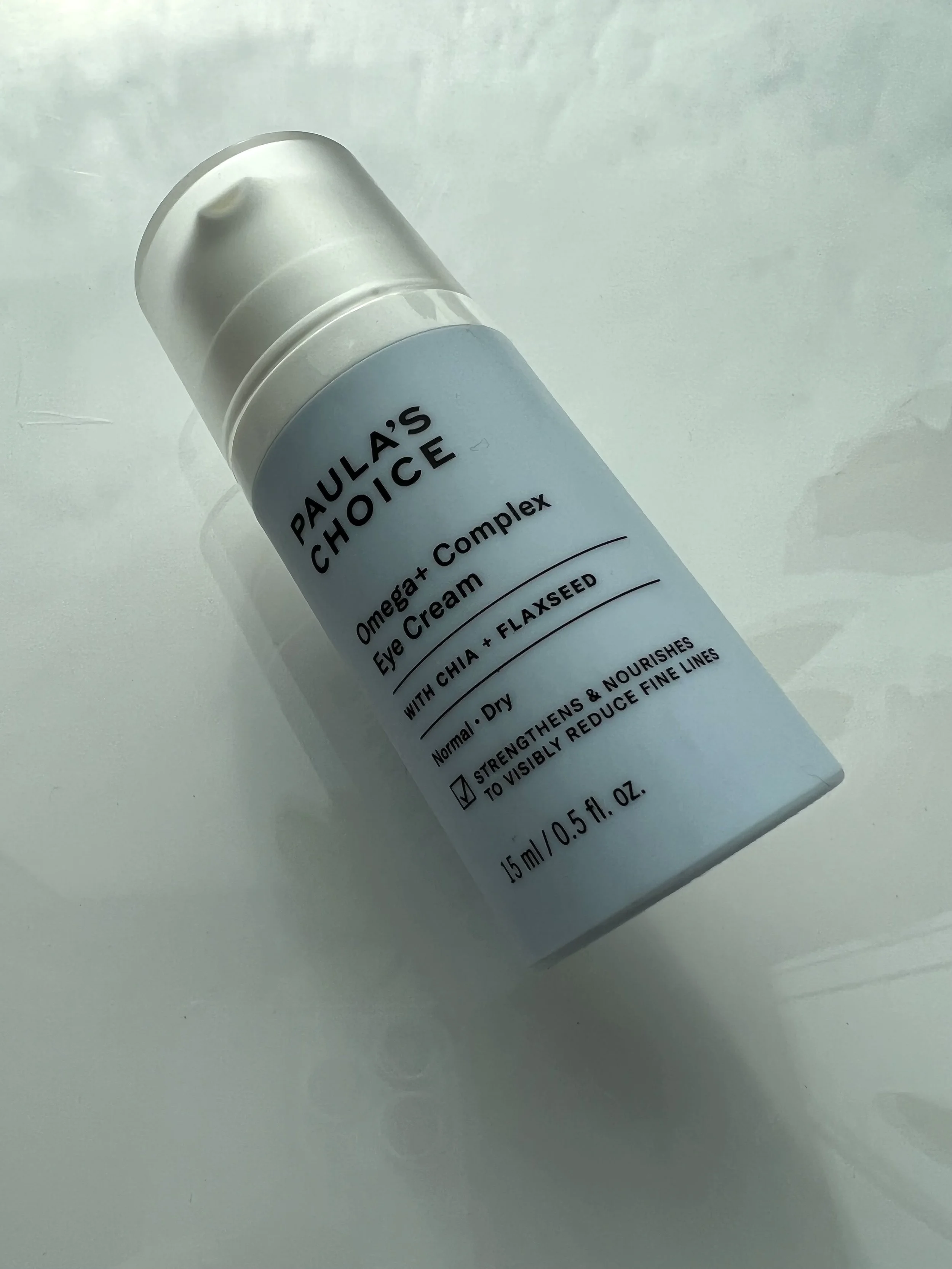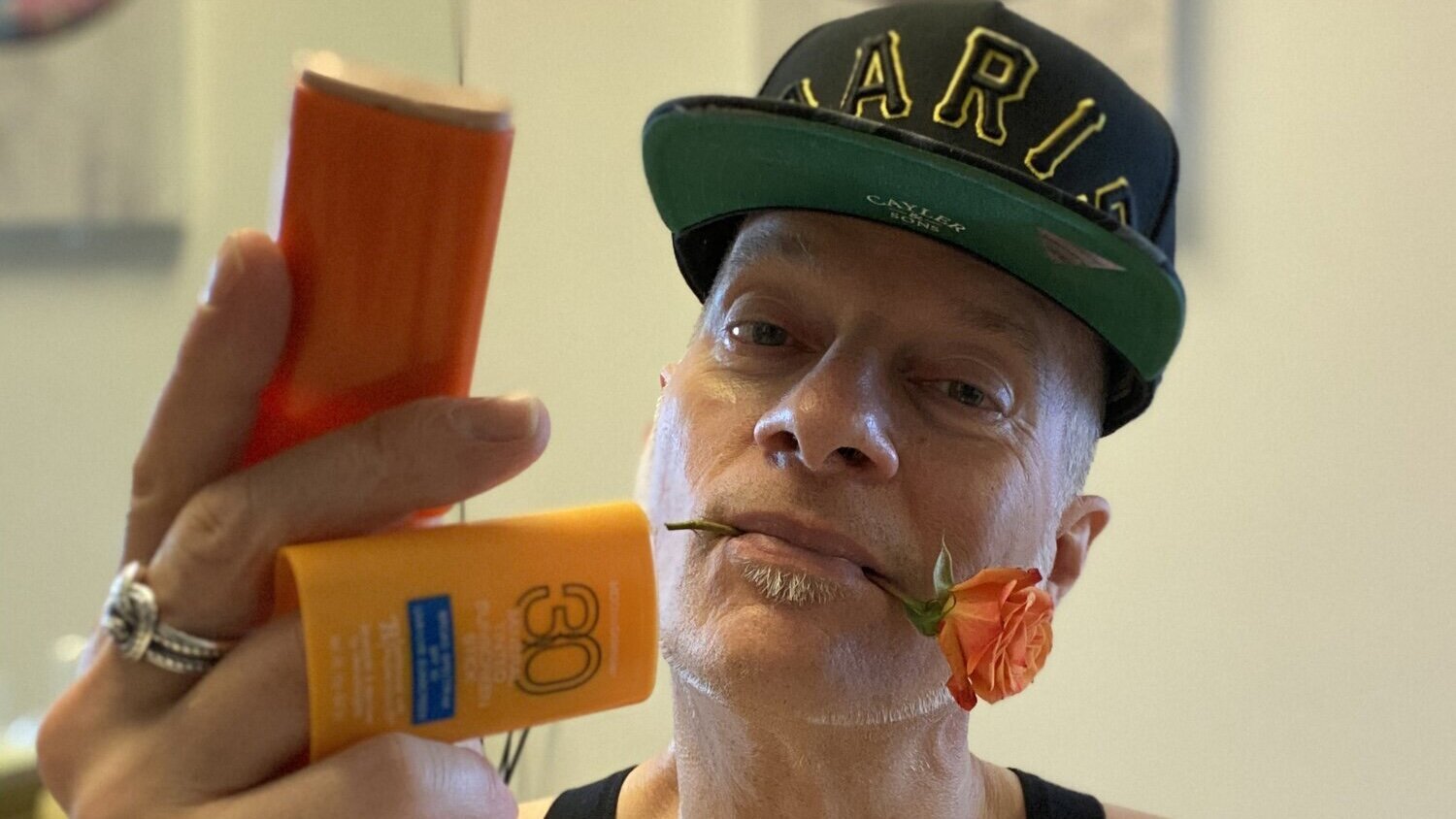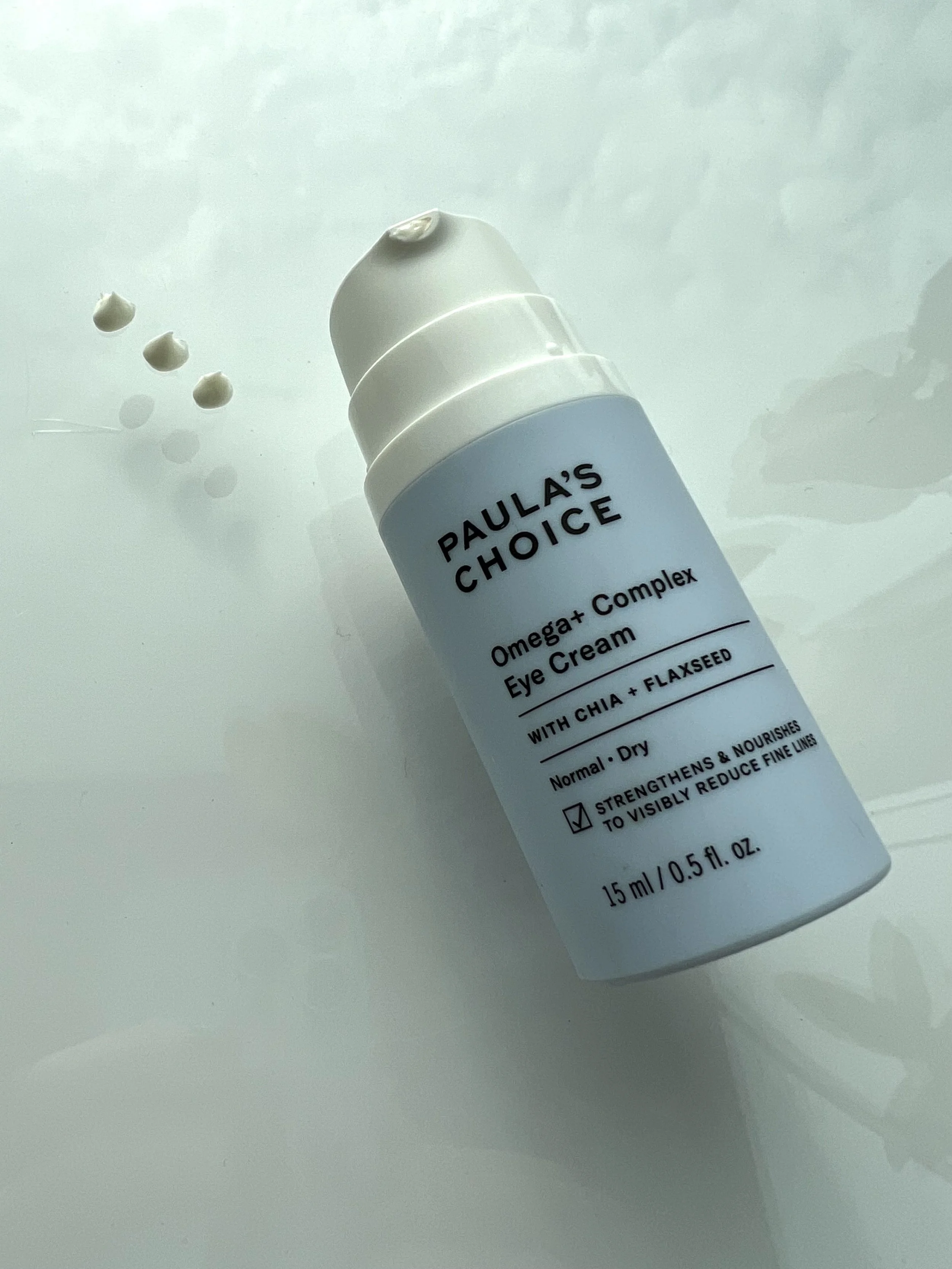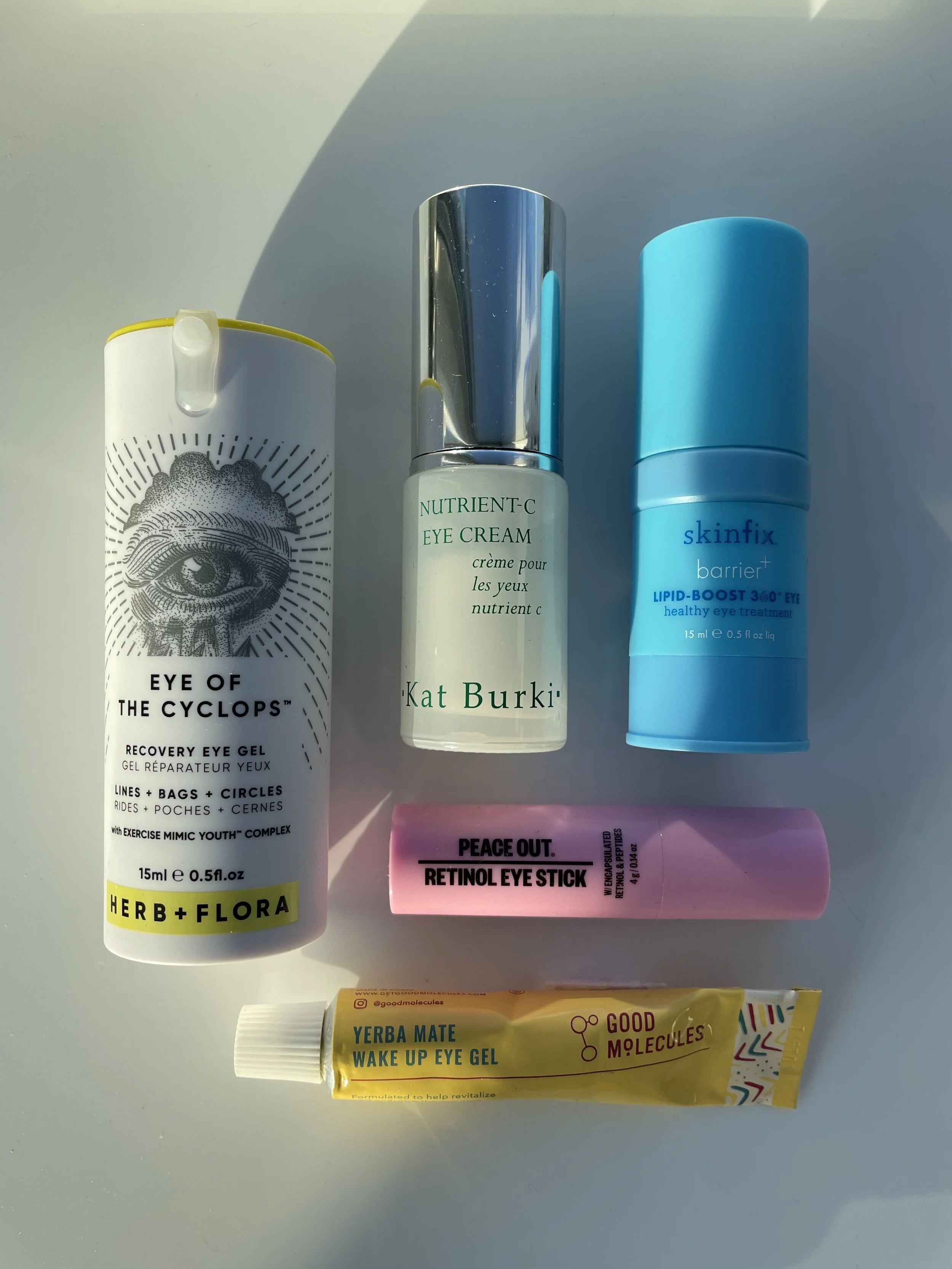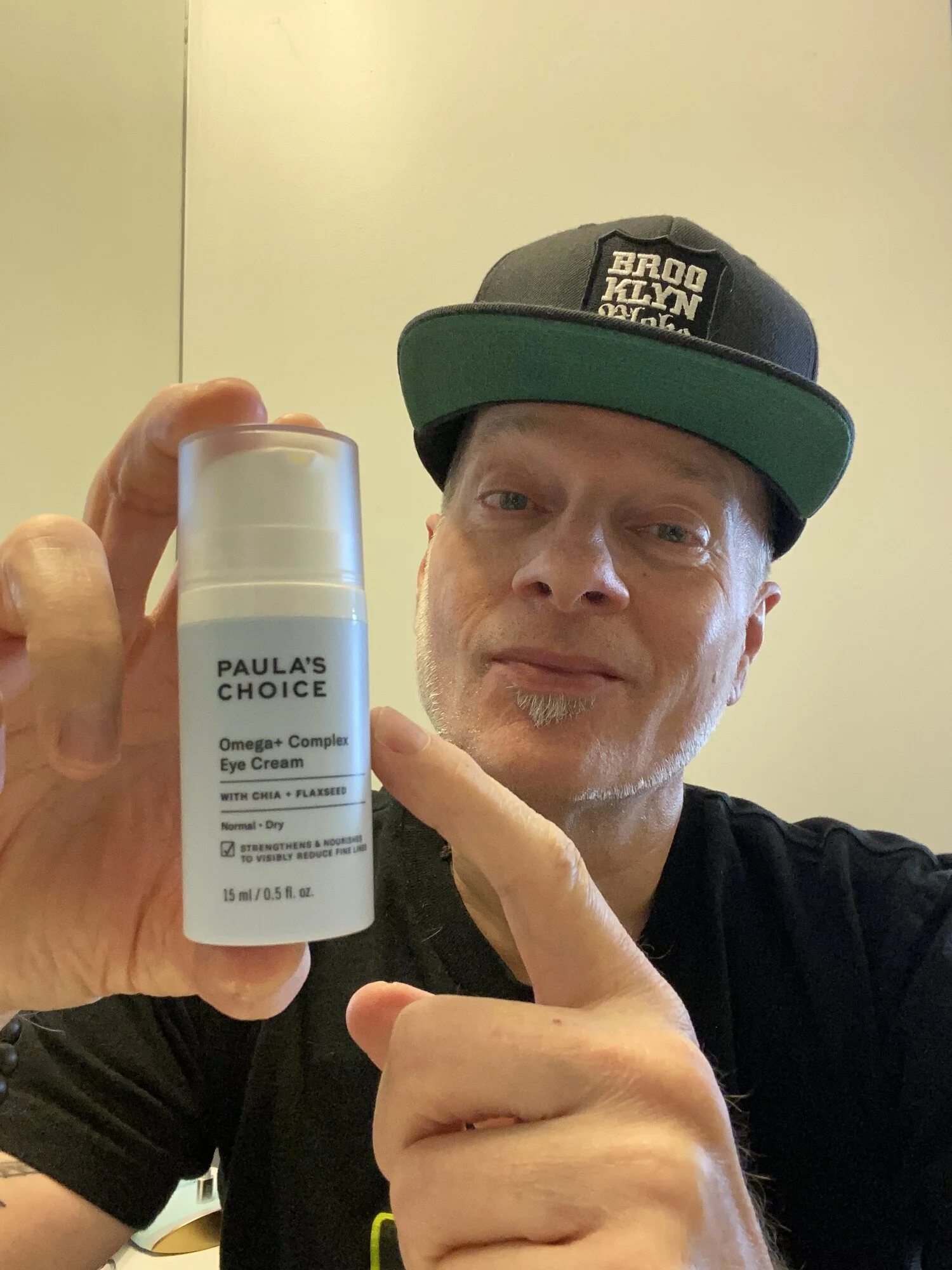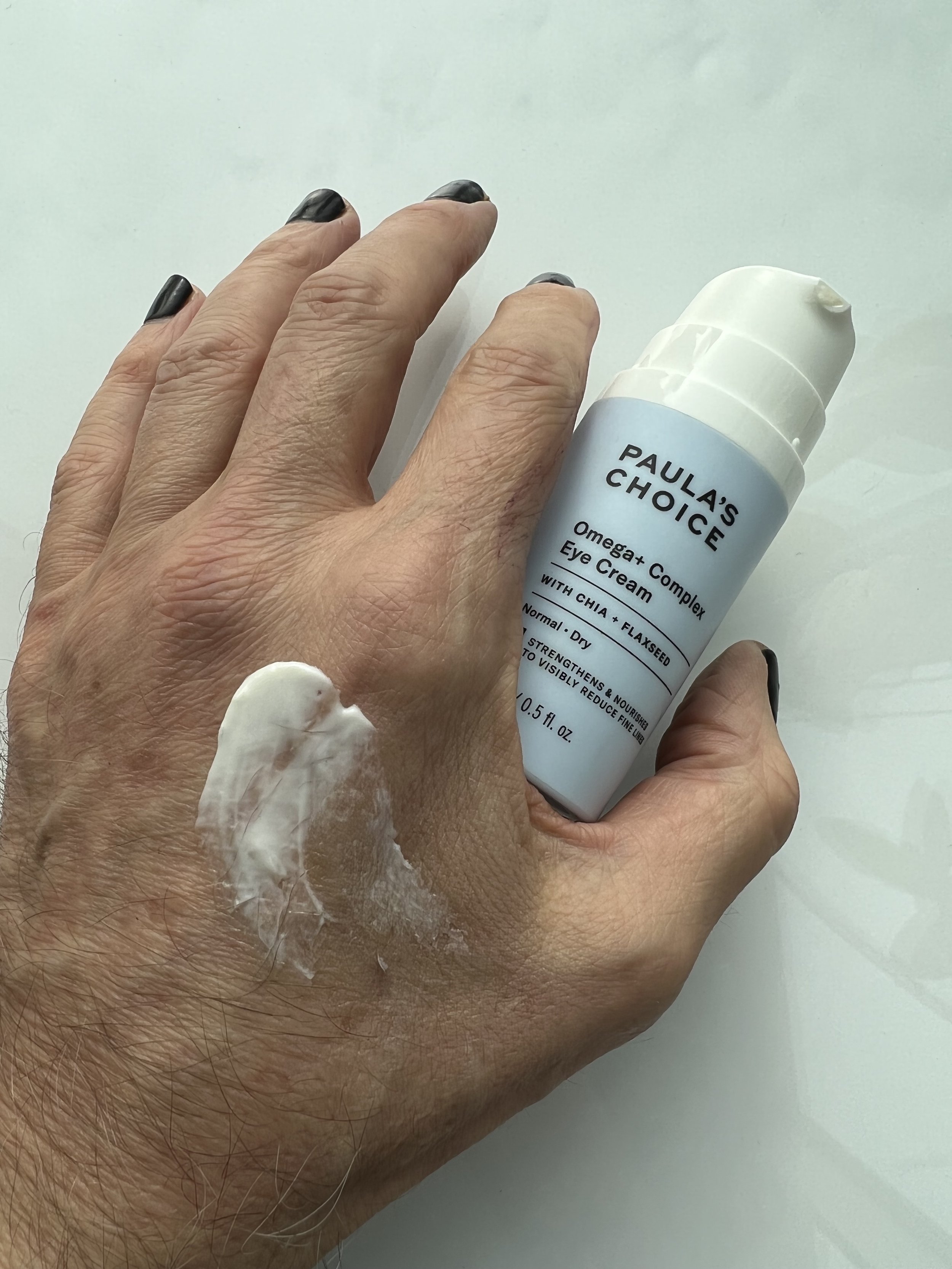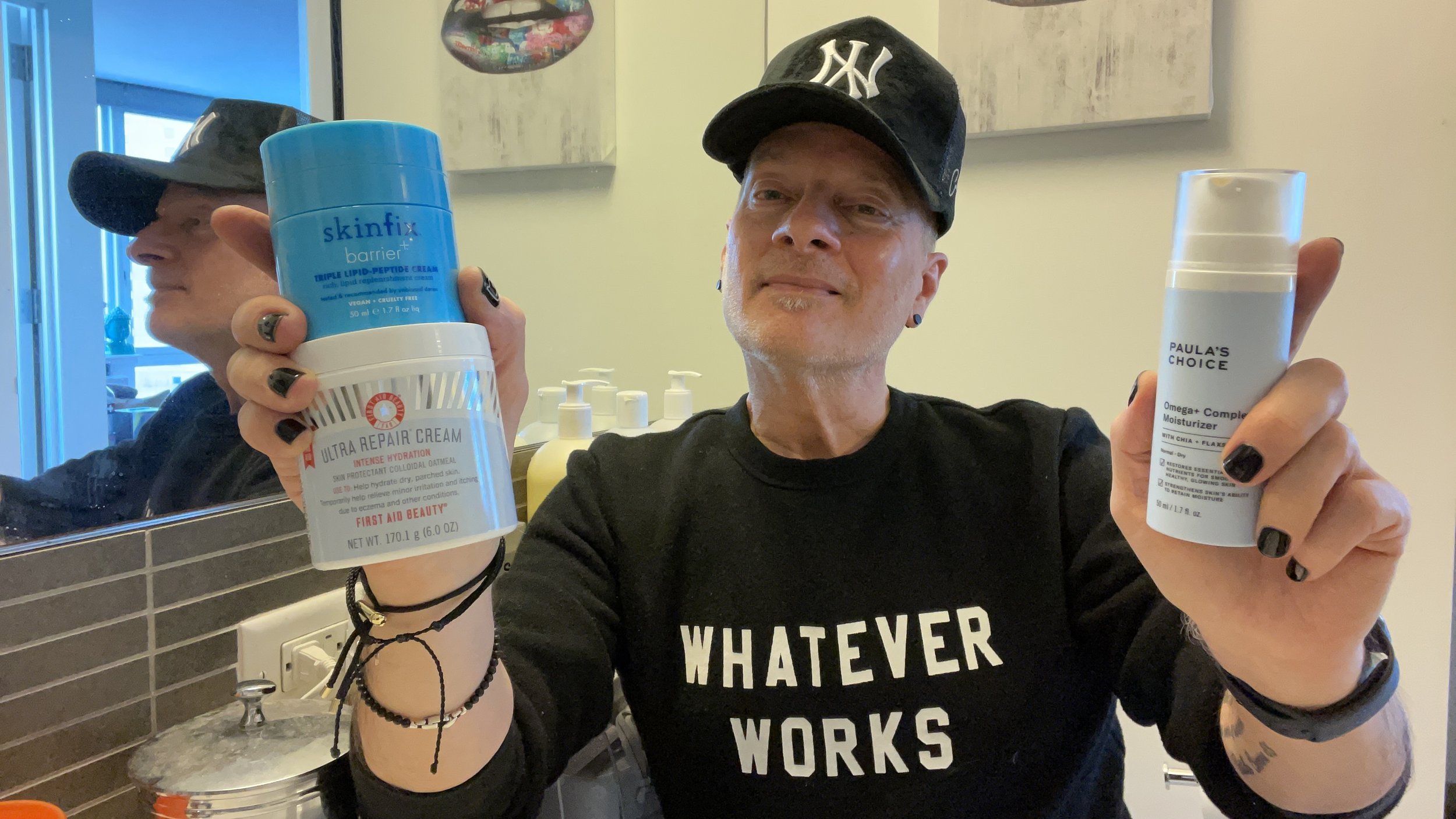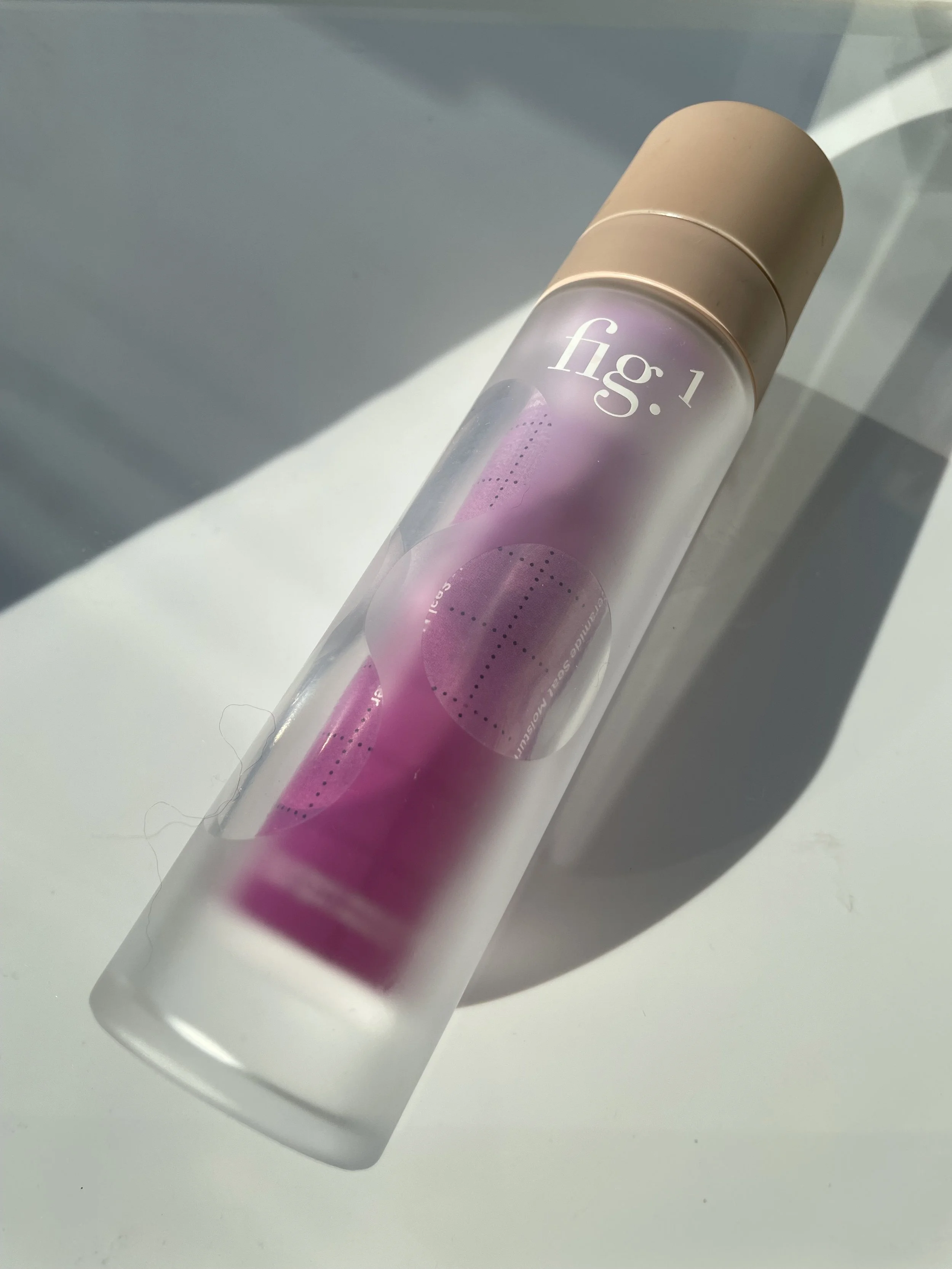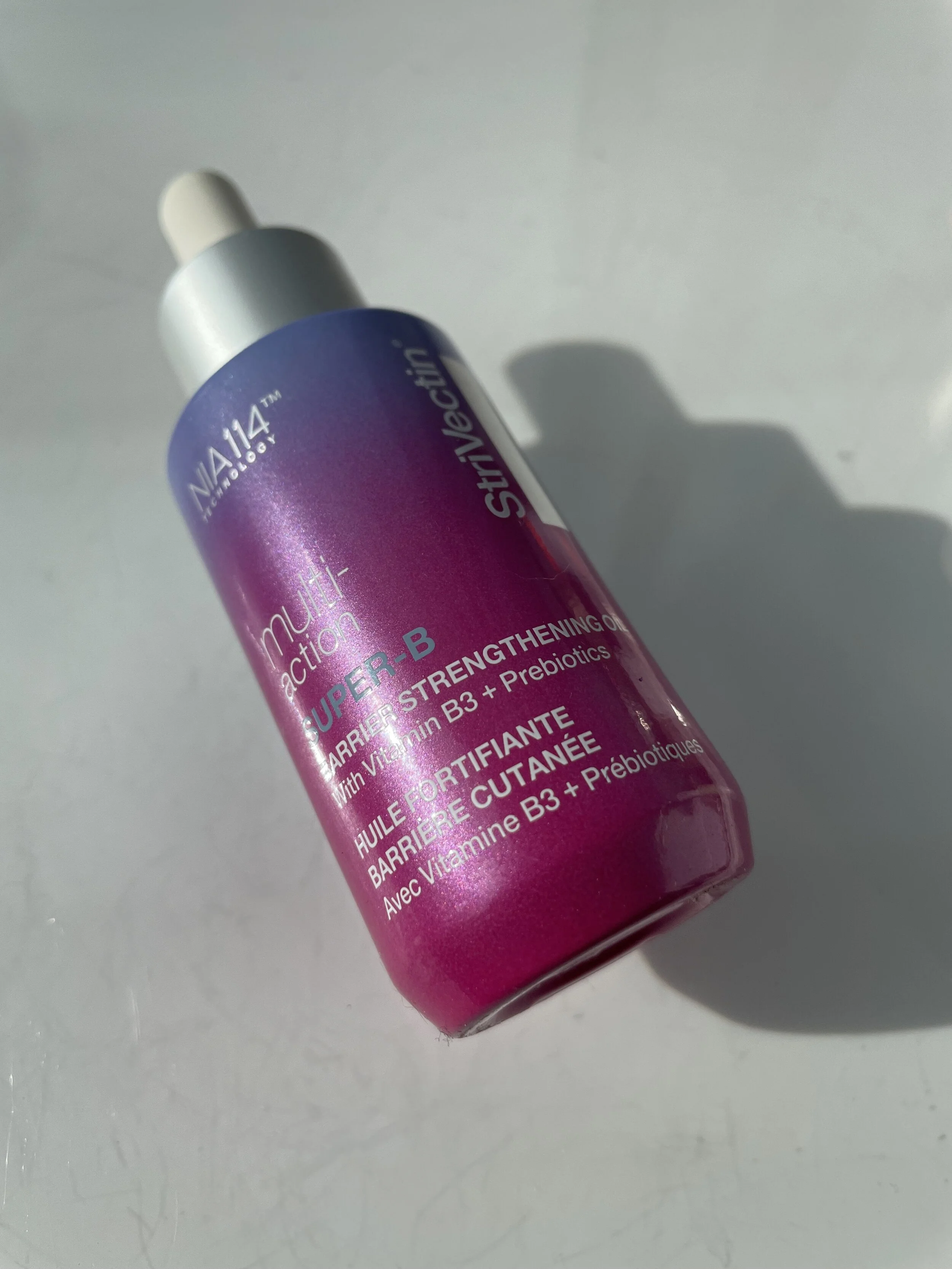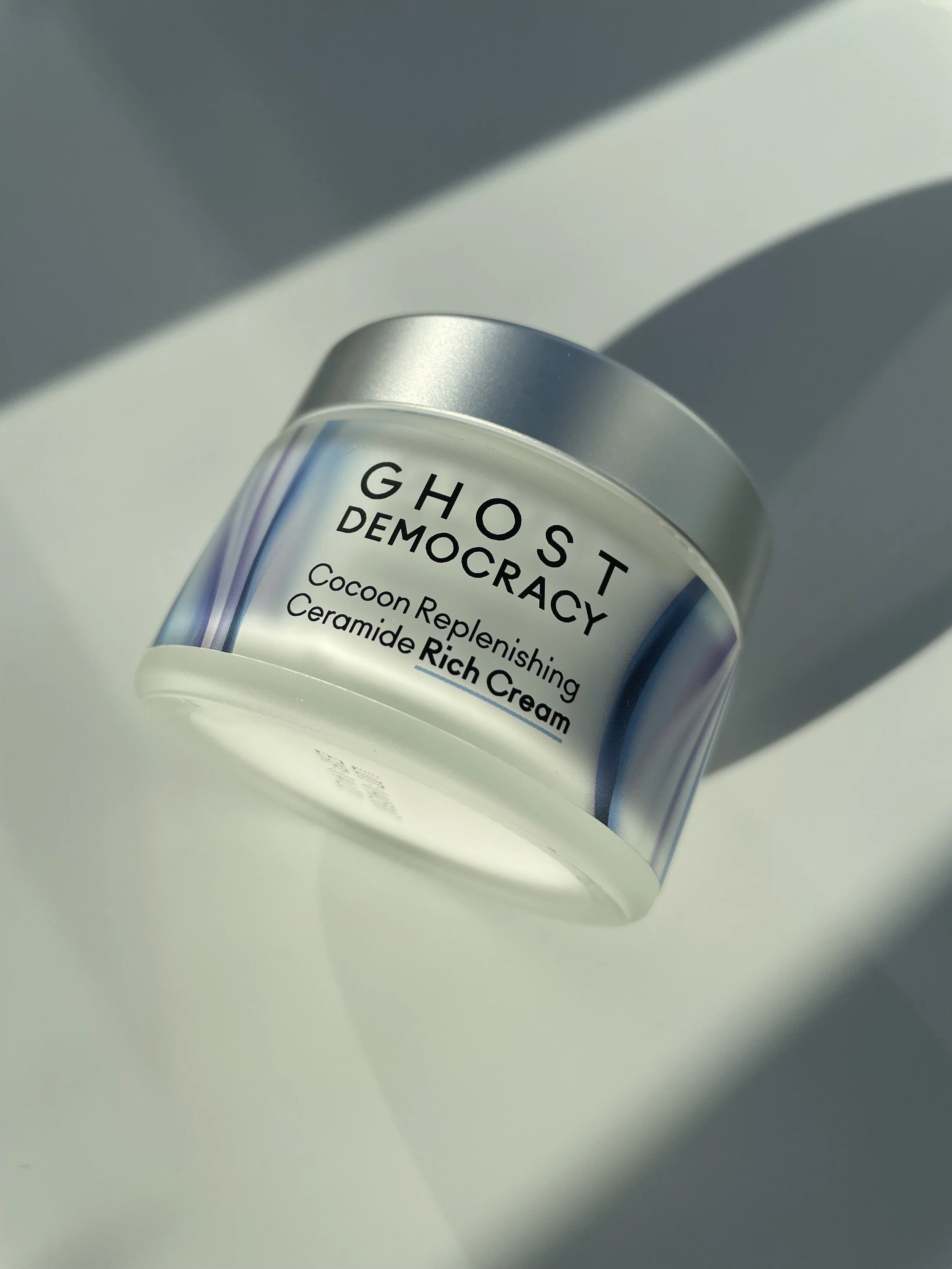SEASONAL SKINCARE TRANSITIONING: DRY SKIN? YOU MAY BE LOW ON LIPIDS! SKINFIX TRIPLE LIPID-PEPTIDE FACE CREAM AND FIG. 1 BEAUTY CERAMIDE MOISTURIZER – BEST FACE CREAMS FOR DRY SKIN
Over the last several weeks, I’ve been featuring products that are ideal for colder weather in a series of blog articles themed around the concept of “season skincare transitioning.”
During the chilly fall and winter months, it is essential to switch up your skincare with products formulated for preventing dehydration and trans-epidermal water loss, or TEWL.
Notably, I’ve been hearing a lot about TEWL this season, more than in seasons past. And that’s a really, really good thing. It means that skincare marketers are increasingly focusing on skin health and the compromising effects that dehydration can have on the health of your skin. Dehydration and sun damage are two leading causes of skin aging.
Reflecting back on my eight years working at Kiehl’s, I can’t recall a single conversation about dehydration and, certainly, never once heard the term TEWL. A tool was something you used to take your mouse apart.
SEASONAL SKINCARE TRANSITIONING: FACIAL OILS I LOVE THAT MAKE ME EXCITED FOR COLD WEATHER - BEST FACE OILS
What is trans-epidermal water loss? Well, simply, it’s the loss of moisture through the skin barrier — and the leading cause of dehydration. When the air around us gets colder, it dries out. In a freak of nature that doesn’t favor humans, this low-humidity air literally draws water out of our skin to compensate and replenish itself. There are several things we can do to combat these drying forces.
What Is Trans-Epidermal Water Loss and What Causes Trans Epidermal Water Loss?
For a deeper dive (no pun intended!) into trans-epidermal water loss, or TEWL, there’s an excellent article on the health website Skin Better titled, What Is Transepidermal Water Loss and Why Is it Important? It’s available to read here.
In the piece, the author explains TEWL as follows:
“The skin is comprised of three primary layers: the epidermis, the outermost layer; the dermis or middle layer; and the hypodermis, the undermost layer. When water passes from the dermis through the epidermis and evaporates from the skin’s surface, this is known as transepidermal water loss (International Journal of Pharmaceutics).
While TEWL is a process that your skin naturally regulates, certain factors that can damage the skin’s barrier function can also affect TEWL levels. Circumstances such as injury, low-humidity weather conditions and topically applied products that dry out the skin can impact TEWL.
To achieve this, combine humectant and occlusive skincare ingredients.
Transepidermal water loss can contribute to a variety of dry skin conditions, and although it is a natural process, there are ways that you can help your skin stay moisturized and hydrated. Hydration refers to the water content of the skin, whereas moisturization is the skin’s ability to retain those water molecules. Therefore, your skin needs both elements to maintain desirable levels of TEWL.
To achieve this, combine humectant and occlusive skincare ingredients. Humectants help to draw moisture to the epidermis, either from the air if it is humid enough, or from the underlying dermis in low-humidity conditions. Because water content that is drawn from the dermis can be lost through TEWL, it’s important to combine the use of humectants with occlusives. Together, these ingredients create a reservoir of moisture in the epidermis and act as a barrier on the skin to help prevent TEWL by sealing in that moisture. The occlusive agents simultaneously keep pollutants, toxins and harmful bacteria out (Skin Therapy Letter).”
WATCH MY VIDEO REVIEW OF
SKINCARMA LOCK & BLOCK: THE BEST WAY TO KEEP SKIN HEALTHY & HYDRATED IN DRY, COLD AIR!
ON MY YOUTUBE CHANNEL HERE
Throughout my series on seasonal skincare transitioning, I’ve talked about what I refer to as the Skincarma Lock & Block strategy. What I’m referring to are the two measures necessary for preventing trans-epidermal water loss and subsequent dehydration. They are locking water in the skin with humectants and blocking the escape of moisture through the skin barrier with occlusive products like heavier facial oils and creams.
The Skincarma “Lock and Block” Prevents Dehydration
To start, preventing dehydration in the first place requires drinking enough water. That differs for each of us based on our weight, the foods we eat, and the climate we live in. It’s even more important during colder periods.
A good rule is to drink one ounce of water each day for every pound of body weight. So, if you weigh 150 lbs., you’ll need to drink 150 ounces of water each and every day to keep your body and your skin optimally hydrated.
Then, employing skincare to treat and prevent dehydration requires what I refer to as a “lock and block” strategy.
It begins with a dedicated humectant serum applied to the skin in both your AM and PM routines that helps to lock water in. Follow with a moisturizer composed of a healthy balance of both humectants and oils to block and prevent the trans-epidermal water loss that can lead to dehydration.
SEASONAL SKINCARE TRANSITIONING: THE BEST PRODUCTS FROM THE ORDINARY AND NIOD THAT GET ME EXCITED FOR THE COLD!
So it’s heartening that marketers seem to be moving away from new shiny objects like made-up ingredient complexes and are targeting real concerns like dehydration with real solutions, including humectants and occlusive ingredients like plant oils and lipids.
And, we’ve also been hearing a lot about lipids! In fact, one of the top selling moisturizers at Sephora is the Skinfix Barrier+ Triple Lipid-Peptide Face Cream – one of the best face creams for dry skin and one of my all-time favorite moisturizers in winter. More on this winter skin savior below.
What are lipids? Well, they’re fat substances in the skin’s layers responsible for keeping the skin moisturized, maintaining skin barrier strength — and they even play a role in the skin’s reparative processes. Lipids are found in plants, animals, and human skin. Human skin lipids include substances likely familiar to you: ceramides, cholesterol and fatty acids.
Our skin’s lipid composition contains a healthy balance of each of these. In general, the skin’s lipid content includes 50% ceramides, 25% cholesterol, and between 10–20% fatty acids.
SEASONAL SKINCARE TRANSITIONING: MOISTURIZERS I LOVE THAT MAKE ME EXCITED FOR THE COLD – PART TWO
What Are Skin Lipids and Are Lipids Good for Skin?
There’s an insightful article on the Dermstore website titled, The Role of Lipids—Cholesterol, Ceramides and Fatty Acids—in the Aging Process which you can read here.
Lipids in Your Skin
In a nutshell, lipids are skin’s natural fats. They are essential components of skin and play a crucial role in maintaining the strength of the skin’s protective barrier, which holds moisture, protects the skin from damage and keeps dirt and impurities out. They also aid the skin’s natural repair process. While there are many types of lipids, these three are the most prevalent—and important—for the skin.
Cholesterol: This lipid helps accelerate the skin barrier’s recovery and improve the appearance of skin elasticity. Visible skin aging is often caused by cholesterol deficiency on the skin. It’s important to note that cholesterol on your skin is different from the cholesterol found in the blood, and having more of it on your skin won’t cause your blood pressure to spike.
Ceramides: This type of lipid is proven to increase the skin’s hydration and barrier function. Ceramide deficiency is the main cause of dry skin.
Fatty acids: Abundant in young, healthy skin, fatty acids help maintain the skin’s lipid balance.
The Role of Topical LipidsHealthy, youthful skin has an abundance of these naturally occurring lipids. As we age, lipid production declines, and this can result in rough surface texture, uncomfortable tightness, dullness and loss of facial fullness. A compromised skin barrier is also more prone to irritation and water loss. This is why it’s important to counter the effects of lipid loss with a topical treatment—but not just any topical treatment.
PRODUCT REVIEW: FIRST AID BEAUTY ULTRA REPAIR FIRMING COLLAGEN CREAM – BEST FACE CREAM FOR SENSITIVE SKIN
Replenishing lost lipids is essential to maintaining healthy functioning skin as we age and during the colder months of the year. A lipid replenishing moisturizer is key. A good moisturizer can replenish a lot of what skin needs, but a great moisturizer replenishes lost lipids!
On many recent nights, I’ve reached for one of my two favorite lipid replenishing moisturizers: the Skinfix Barrier+ Triple Lipid-Peptide Face Cream and Fig. 1 Beauty’s Ceramide Moisturizer.
Both of these well-formulated face creams replenish lipids like ceramides and fatty acids in the skin. Both have solid clinical results, are vegan and free of fragrance and other sensitizing ingredients. They’re two of the best face creams for dry skin any time of year but particularly during the colder months of fall and winter.
Let’s have a look at two of my favorite lipid-replenishing face creams (and one really fantastic eye cream!) in more detail…
Skinfix | Barrier+ Triple Lipid-Peptide Face Cream
I’ve had such great pleasure exploring the Skinfix brand over the past two years. I’ve even had the honor to work for the brand in my day job as a copywriter, including crafting several blog articles on the Skinfix website. Found on the brand’s blog, The Fix, one of my favorites articles is titled, What is the Skin Barrier and What Does it Do?
If you aren’t all that familiar with the brand, Skinfix is a “clean clinical” skincare brand focused entirely on skin barrier health. And their cult face cream Barrier+ Triple Lipid-Peptide Cream is a next level moisturizer for maintain barrier health in winter-ravaged skin. There’s simply no brand that focuses more on skin barrier health than Skinfix.
From the article on The Fix:
What does the skin barrier do?
The outermost layer of the epidermis, the skin barrier (also known as the moisture barrier or lipid barrier) is a perfectly functioning defensive shield when it’s in healthy shape. This natural barricade helps keep viruses and bacteria from entering the body, defends against free radical attacks and pollutants, and prevents most foreign substances from passing into the skin.
But it also functions in reverse. Not only does the skin barrier help keep things out, it helps keep vital substances in – like water, oil and numerous other components of healthy skin, including essential lipids like fatty acids and ceramides. These natural fats function like mortar to bind the skin cells together.
While a brilliant protective later, the skin barrier isn’t impermeable. If it were, some of the most beneficial skincare actives found in the best anti-aging serums, like antioxidant vitamins and botanicals, nourishing plant oils and amino acids, wouldn’t be able to penetrate the skin to enhance and sustain skin health.
I’ve featured Skinfix multiple times on the Skincarma Blog. You may recall my selection of the Skinfix Remedy+ 911 Ointment in my blog article on maskne titled, Best Maskne Treatments – available to read here.
Seriously, if you’re struggling with maskne after two years of pandemic masking, get yourself a tube of the Skinfix Remedy+ 911 Ointment!
BEST MASKNE TREATMENTS - ZITSTICKA KILLA ZIT PATCHES, BALM LABS CLEAR BALM SERUM, SKINFIX 911 OINTMENT
Closely tied to skin barrier health, the Skinfix team are experts in the treatment of eczema as well as perioral dermatitis around the mouth, which made the choice of Remedy+ 911 Ointment the perfect pick for the treatment of maskne. In fact, Skinfix has an entire range of eczema treatments called Eczema+.
While eczema can be a year-round issue for many people, it’s even more common in the fall and winter when skin tends to dry out and crack, allowing bacteria and viruses to enter the skin barrier.
The Skinfix Eczema+ collection comprises about a half dozen products. If you’re suffering from eczema or atopic dermatitis, the brand’s Eczema+ products are for you.
The Skinfix brand also has a broad collection of products that target skin barrier health directly called Barrier+. And the centerpiece of the Skinfix Barrier+ collection is this fantastic cold weather face cream, the Barrier+ Triple Lipid-Peptide Cream — my winter skin savior.
The Triple Lipid-Peptide Cream (TLPC) moisturizer is deliciously rich, thick and creamy — the perfect moisturizer for dry skin and pretty much all skin types in winter. Why? Because it’s rich in bio-compatible lipids. the foundation of all skin, no matter its type. Skin needs lipids to function. As I said earlier, natural occurring lipids found in the skin include ceramides, fatty acids, and cholesterol.
The Skinfix Barrier+ Triple Lipid-Peptide Cream contains the brand’s proprietary Triple Lipid Complex that, “helps to restore skin’s natural lipids and fatty acids for glowing, smooth, healthy-looking skin.”
What’s the Difference between Dry Skin and Dehydrated Skin?
Many people confuse the two. They’re not the same thing. Dry skin is a skin type. Dehydrated skin is a skin condition, just as being thirsty is a sign that your body is dehydrated. Dehydrated skin lacks water and any skin type, no matter its level of dryness or oiliness, can be dehydrated.
In particular, dehydration is something that’s common to all of us in the cold as the low-humidity air around us draws water through the skin barrier and out of our skin. This process is referred to as trans-epidermal water loss, or TEWL.
I always think it’s helpful to understand the difference between dry skin and dehydrated skin in order to protect your skin health in the weeks ahead. For insights, I turned to the experts on the Paula’s Choice Research Team. There’s a superb piece on the Paula’s Choice site titled, What is Dehydrated Skin & How to Choose the Best Products.
Here is an excerpt:
Dehydrated skin often looks and feels like dry skin all over your face, but there's a major difference between the two: dehydrated skin is usually a temporary concern (with various surprising causes) and dry skin typically doesn't change over time. If you have dehydrated skin, your skin may also produce a normal or even excessive amount of oil on its surface.
"Dehydrated skin" is something we’re asked about frequently. It seems there’s a lot of confusion about what this skin concern is about. A major part of the confusion is that the term "dehydrated skin" is often used interchangeably with "dry skin" or "combination skin" but they are not the same! Dehydrated skin can occur in all skin types and is not exclusive to those with dry skin or combination skin.
The Difference Between Dry Skin and Dehydrated Skin
Having classically dry skin is easy to recognize. Dry skin frequently feels tight and dry, with no oil anywhere to be seen. This situation rarely fluctuates; skin feels dry all year long. The dryness might get worse depending on the climate, season, or activity, but regardless of those things, without great skin care products, the uncomfortable dry, tight feeling will persist.
As mentioned above, dehydrated skin can look and feel similar, but there’s a major difference: Dehydrated skin tends to come and go, it does not persist.
Triple Lipid-Peptide Cream is 95% natural and feels like velvet on the skin. True to the brand’s position as “cleanical” — an anagram of the words clean and clinical — it has a reparative effect on the skin.
In fact, according to Skinfix,
“In a 28 day clinical study using Barrier+ Triple Lipid-Hyaluronate Serum in conjunction with, Barrier+ Foaming Oil Cleanser, Barrier+ Triple Lipid-Peptide Lotion & Cream, the quantity of lipids in the skin barrier increased by a significant 23.6% in 28 days (that's nearly a 1% increase in skin lipids each day!).”
You really begin to feel the effects of the replenishing lipids in Triple Lipid-Peptide Cream within a week or so. It’s such a fantastic moisturizer for the cold and especially the skin type that suffers most from low-humidity air: dry skin!
WATCH MY VIDEO REVIEW OF
MY WINTER SKIN SAVIOR: SKINFIX BARRIER+ LIPID REPLENISHING SKINCARE
ON MY YOUTUBE CHANNEL HERE
What I like about it: The Skinfix Barrier+ Triple Lipid-Peptide Face Cream is one of my all-time favorite face creams and has been a real skin savior for me in cold weather. It’s super rich without leaving skin greasy. Recently the brand introduced a larger size and in early 2022, Skinfix will begin to offer Triple Lipid-Peptide Face Cream in refillable packaging.
What I don’t like about it: Honestly, there’s nothing I don’t like about it. It’s that good.
Who it’s for: Dry skin types year round and all skin types in the cold except for very oily and blemish prone skins.
SHOP THE BLOG: Purchase the Skinfix Barrier+ Triple Lipid-Peptide Face Cream for $50 here.
MY FAVORITE HUMECTANT SERUMS FROM PAULA'S CHOICE, THE INKEY LIST AND MORE - BEST HYALURONIC ACID SERUMS
Fig. 1 Beauty | Ceramide Moisturizer
I first featured Figure 1 Beauty (Fig.1) on the Skincarma Blog in a product review of the clean, sustainable brand’s N4 Niacinamide Nourishing Treatment. I was so impressed with the product that I’ve been exploring just about everything Fig.1 has to offer since.
With a genuine sustainable mission that features fully refillable glass packaging, Fig.1 Beauty offers a range of serious, pro-skin health skincare. Among my faves from the brand are the Glycolic Glow Treatment and Fig.1 Pro-Retinol Eye Cream.
But nothing gets me more excited about a brand than a really well-formulated Niacinamide serum! The Fig.1 N4 Niacinamide Nourishing Treatment has a rich, velvety texture that makes it ideal for my season skincare transitioning as warmer weather gives way to cold days and nights.
PRODUCT REVIEW: FIG. 1 BEAUTY N4 NIACINAMIDE NOURISHING TREATMENT - BEST NIACINAMIDE SERUM
The Fig.1 Beauty Ceramide Moisturizer is my latest discovery from the brand and a new personal fave for colder weather. Packed with both peptides and ceramides, the Ceramide Moisturizer has a much lighter texture than the Skinfix Barrier+ Triple Lipid-Peptide Face Cream.
Fig.1 Beauty’s Ceramide Moisturizer is a superb face cream for replenishing lost skin lipids like ceramides which, again, comprise 50% of total lipids found in human skin.
What Are Ceramides and What Do Ceramides Do to the Skin?
There’s an outstanding article on the Paula’s Choice website entitled, What Are Ceramides and How Do They Work in Skin Care Products? In it, the team says that “as far as anti-aging ingredients go, ceramides have a proven record, but are often overlooked, and rarely explained.”
The article goes on to define exactly what ceramides are and what they do in the skin:
What are ceramides?
Simply put, ceramides are lipids (fats) that are found naturally in high concentrations in the uppermost layers of skin. They make up over 50% of skin’s composition, so it’s no surprise they play a vital role in determining how your skin looks (and how it responds to environmental threats).
What do ceramides do?
Think of ceramides as the mortar between bricks—if the bricks are your skin cells. Ceramides help hold skin together by forming a protective layer that limits moisture loss and protects against visible damage from pollution and other environmental stressors. In addition, ceramides — even more than retinol, niacinamide, and peptides — are one of the anti-aging “powerhouses” responsible for supporting skin’s dynamic nature. Two particular ceramide precursors—phytosphingosine and sphingolipids—actually help skin make more ceramides.
In addition to ceramides, the clean, vegan and cruelty-free formula also contains numerous occlusive non-fragrant plants oils that help to replenish and restore the skin barrier to prevent trans-epidermal water loss.
Most notable among these are Limnanthes Alba (Meadowfoam) Seed Oil at ingredient number three after useless water and humectant Glycerin. As I’ve said previously, water in a skincare product has zero benefit for the skin itself. It only benefits the formula.
Meadowfoam Seed Oil, on the other hand, has tremendous benefits for the skin, including replenishing the fatty acid content in the skin barrier.
According to the experts on the Paula’s Choice Research Team, Meadowfoam Seed Oil is one of the best actives used in skincare. What makes it so exceptional exactly?
From the team:
Limnanthes alba (meadowfoam) seed oil is a non-fragrant, edible plant oil originally developed as an agricultural crop in the 1950s. It functions as an emollient and softening agent in skin care and hair care products.
This plant oil is exceedingly stable because it is primarily composed of long chain fatty acids, the type most resistant to rancidity when exposed to oxygen. Among plant oils, meadowfoam has the highest concentration (95%) of these highly stable fatty acids, making it a valuable addition to products that would otherwise be prone to spoiling quickly.
Meadowfoam seed oil can also enhance the penetration of other ingredients into soil and across animal skin; however, to date the same benefit hasn’t been shown to occur on human skin. On the upside, the long-chain fatty acids in this plant oil have chemical similarity to some of the fatty acids found in skin’s own oil, so in theory it’s certainly possible meadowfoam oil would help deliver other oil-based (lipophilic) ingredients to skin.
The Ceramide Moisturizer’s lightweight texture literally melts into the skin — at least it melts instantly into my skin in the cold. It just soaks it up!
As all of the brand’s products the Fig.1 Beauty Ceramide Moisturizer is fully refillable, something that we’re beginning to see more and more of in skincare products.
What I like about it: The Fig. 1 Beauty Ceramide Moisturizer is one of the best face creams for replenishing depleted skin lipids like ceramides and fatty acids. I love that it’s refillable, as well. I’ve refilled my own twice now.
What I don’t like about it: There’s nothing I dislike about the Ceramide Moisturizer.
Who it’s for: All skin types in colder weather, especially normal, dry, sensitive and combination skins. It may even be suitable to slightly oily skin in the cold.
SHOP THE BLOG: Purchase the Fig.1 Beauty Ceramide Moisturizer for $28 here. The product refill is abatable for $25 here.
The Best Niacinamide Serums And Treatments
WATCH MY VIDEO REVIEW OF
MY FAVORITE HUMECTANT SERUMS FROM PAULA'S CHOICE, THE INKEY LIST, GHOST DEMOCRACY AND MORE
ON MY YOUTUBE CHANNEL HERE
Paula’s Choice | Omega+ Complex Eye Cream
As I’ve said multiple times previously, I’m not sold on the need for a separate eye cream. In fact, that’s a philosophy long espoused by Paula Begoun herself! The only time I think you really need to use a separate eye formulation, rather than a face cream around your eyes, is if you have a concern for dark circles and puffiness.
And, of course, during the colder, drier, low-humidity seasons of fall and winter!
Even Paula eventually came around to the idea of using a separate eye cream. Today, the brand offers four distinct eye creams and, of course, they’re among the best eye creams for wrinkles, dry skin, and puffiness. Why? Because consumers have been conditioned to think that they need an eye cream to fight signs of aging in the eye area.
The truth is, you can and should be able to use a well-formulated facial skincare product around your eye area. And if you’re concerned about fine lines and wrinkles around your eyes, be sure you’re using a sunscreen in the immediate eye area. The delicate skin around the eyes needs protection from UV damage just as much (and maybe more!) as the rest of your face.
The Best Sunscreens For Eyes
Two of my favorite eye creams are from Paula’s Choice — the Ceramide-Enriched Firming Eye Cream and the Paula’s Choice Omega+ Complex Eye Cream.
If you’re looking for a really well-formulated, reliable eye cream year-round, the Paula’s Choice Omega+ Complex Eye Cream is ideal for maintaining the health of the skin around the eyes by replenishing lost lipids and preventing trans-epidermal water loss.
There’s a reason that signs of aging appear in the eye area first. Because the skin around the eyes is so delicate, it is most vulnerable to water loss. Not only is it the thinnest skin anywhere on your face, but the skin in the eye area contains fewer oils and lipids, or fats, than the rest of the face. That means water can more easily seep through the skin barrier — and result in the formulation of crow’s feet and fine lines around the eyes.
TEWL in eye area skin is a serious matter as there’s simple nothing to prevent dehydration, a particular problem for eyes when exposed to cold air.
A really, well-formulated replenishing eye cream is essential in the colder months when your eye area is exposed to the harsh, cold, low-humidity air. Why? Because you want to do everything you can to prevent trans-epidermal water loss around your eyes. Once it’s in effect, it can cause long-term damage in the form of lines and wrinkles, the first signs of aging.
I used to nervously joke that at the end of every winter, I’d aged an entire year. As if skin aging were accelerated during those three to four cold months. My eye area suffered the most. It was only when I began to understand what trans-epidermal water loss is an how to prevent it from happening that I began to properly maintain a healthy eye area.
EYE CREAMS I THINK YOU'LL LOVE AS MUCH AS I DO - SKINFIX LIPID-BOOST 360 EYE, GOOD MOLECULES WAKE-UP EYE GEL & MORE!
If you’re a skincare aficionado that believes an eye cream is essential in your routine, then at the very least reach for something well formulated that delivers real benefits to the delicate skin of the eye area. You cannot go wrong with the Paula’s Choice Omega+ Complex Eye Cream.
The Omega+ Complex Eye Cream is a light, yet substantive formula that’s intended to moisturize and fortify even the driest of skin types. But it’s not too heavy if you have a concern for oiliness — though oily skin in the eye area is rare. Again, the skin is simply too thin to hold a lot of oils.
Of the Omega+ Complex Eye Cream, Paula says the “sheer, lightweight lotion layers well and combines proven moisture-locking omegas, ceramides and amino acids together to plump skin’s surface and maintain hydration. Plus, a blend of niacinamide, mulberry, bearberry and licorice visibly brightens.”
Honestly, it’s a veritable cocktail of pro-skin health goodness for eyes! But it’s the omega fatty acids for me.
What Are Fatty Acids and What Are Fatty Acids in Skin Care?
There’s an insightful piece on the Paula’s Choice website titled, How Omega Fatty Acids Help Skin. In it, the experts on the Paula’s Choice Research Team explain the vital importance of fatty acids to skin health.
Omega fatty acids like those found in fish and various plant oils are well known for their remarkable nutritional benefits when consumed via food or supplements as part of a healthy diet—but you might not know about the amazing benefits they have when applied to skin.
The research about omega’s healthy fatty acids for skin is fascinating; in fact, it inspired us to formulate highly specialized products to deliver these important ingredients—and their benefits—to skin: Omega+ Complex Serum, Omega+ Complex Moisturizer, and Omega+ Complex Eye Cream. Adding one or more of these omega fatty acid-packed products to your skin care routine can supplement and enhance the results you get from your other products for visibly improved skin.
What are Omega Fatty Acids?
Omega fatty acids are valuable fats, for your diet and your skin. There are 11 omega fatty acids of which two (omega-3 and omega-6) are considered essential fatty acids because the body cannot make them on its own (meaning you must supplement them in one way or another). Among the omegas, the most vital for skin are:
Omega-3— Found in foods such as fish, flax seed (linseed), walnut, and chia oils, plus certain species of algae
Omega-6— Abundant in many plant oils, linoleic acid, and passion fruit oil
Omega-9— Plentiful in flax seed (linseed) oil and soybean, canola, peanut, and sunflower oils
Omega-3 and 6 fatty acids are not only essential to consume orally, but when applied to skin, research has shown they play a role in maintaining your skin's healthy appearance, among many other benefits.
The Paula’s Choice Omega+ Complex Eye Cream is the best eye cream from Paula’s Choice. In fact, it’s the perfect eye cream for all skin types in the cold with superb replenishing benefits for the skin.
What I like about it: The Paula’s Choice Omega+ Complex Eye Cream is a near-perfect eye cream and is especially ideal for replenishing depleted lipids like fatty acids in the eye area. It has an amazing texture, too, that makes it suitable for just about everyone.
What I don’t like about it: There’s nothing I dislike about this eye cream. Unlike so many well-formulated eye creams, it’s house in an airless pump — not a jar!
Who it’s for: All skin types, even oily and very oily skins.
SHOP THE BLOG: Purchase the Paula’s Choice Omega+ Complex Eye Cream for $34 here.
I hope this helps you to appreciate the important role that lipids play in the health of your skin. Again, it’s essential to switch up your skincare routine during the colder months to prevent dehydration. I invite you to check out my picks of the best face creams for dry skin here and best face creams for oily skin here.
See you next week…
💟 Carmine @skincarma
The Best Face Creams For Dry Skin
WATCH MY VIDEO REVIEW OF
MY WINTER SKIN SAVIOR: SKINFIX BARRIER+ LIPID REPLENISHING SKINCARE
ON MY YOUTUBE CHANNEL HERE
WATCH MY VIDEO REVIEW
HOW’S YOUR MICROBIOME DOING? THE BEST WAY TO CHECK YOUR MICROBIOME HEALTH…
ON MY YOUTUBE CHANNEL HERE
WATCH MY VIDEO REVIEW
A COMPLETE K-BEAUTY ROUTINE WITH THE BEST FACIAL SKINCARE FROM PURITO, COSRX, MISSHA & MORE!
ON MY YOUTUBE CHANNEL HERE
WATCH MY VIDEO REVIEW
RETINOL, RETINOIDS, RETINOIC ACID PART ONE - THE BEST RETINOL FACE CREAMS & SERUMS
ON MY YOUTUBE CHANNEL HERE
WATCH MY VIDEO REVIEW OF
MY WINTER SKIN SAVIOR: SKINFIX BARRIER+ LIPID REPLENISHING SKINCARE
ON MY YOUTUBE CHANNEL HERE
SKINCARMA X HERBAL FACE FOOD EXCLUSIVE!
FOR A LIMITED TIME, SAVE 20% OFF HERBAL FACE FOOD!
Enter code SKINCARMA20 at checkout.
WATCH MY VIDEO REVIEW
THE YEAR’S BEST VITAMIN C SERUMS WITH THE ORDINARY, CLINIQUE, BEAUTY STAT & MORE!
ON MY YOUTUBE CHANNEL HERE
WATCH MY VIDEO REVIEW
AMPERNA PROBIOTIC SKINCARE AND TWO OF THE BEST ANTI-AGING SERUMS FOR SENSITIVE SKIN
ON MY YOUTUBE CHANNEL HERE
WATCH MY VIDEO REVIEW
MY #SELFCARESUNDAY ESSENTIALS WITH SKINFIX, HERBIVORE AND SELFLESS!
ON MY YOUTUBE CHANNEL HERE
The Ingredient List of the Skinfix Barrier+ Triple Lipid-Peptide Face Cream:
 sii|h 0 0, Olus Oil (Vegetable Oil) emo, Butyrospermum Parkii (Shea) Butter Extract, Cetyl Lactate emo, Propanediol solv|h, Caprylyl Caprylate/Caprate emo, C12-16 Alcohols emo|vc, Jojoba Oil/Macadamia Seed Oil Esters, Glyceryl Stearate Citrate emo|emu, Palmitic Acid sii|emo|emu 0 2, Hydrogenated Lecithin
sii|h 0 0, Olus Oil (Vegetable Oil) emo, Butyrospermum Parkii (Shea) Butter Extract, Cetyl Lactate emo, Propanediol solv|h, Caprylyl Caprylate/Caprate emo, C12-16 Alcohols emo|vc, Jojoba Oil/Macadamia Seed Oil Esters, Glyceryl Stearate Citrate emo|emu, Palmitic Acid sii|emo|emu 0 2, Hydrogenated Lecithin  emo|emu, Ophiopogon Japonicus Root Extract, Tocopherol
emo|emu, Ophiopogon Japonicus Root Extract, Tocopherol  aox 0-3 0-3, Sodium Hyaluronate
aox 0-3 0-3, Sodium Hyaluronate  sii|h 0 0, Rosmarinus Officinalis (Rosemary) Leaf Extract
sii|h 0 0, Rosmarinus Officinalis (Rosemary) Leaf Extract  aox|so|amic, Helianthus Annuus (Sunflower) Extract
aox|so|amic, Helianthus Annuus (Sunflower) Extract  so|emo, Phytosteryl Macadamiate, Phytosterols, Squalene
so|emo, Phytosteryl Macadamiate, Phytosterols, Squalene  sii|aox|emo, Aloe Barbadensis Leaf Juice
sii|aox|emo, Aloe Barbadensis Leaf Juice  so|h, Oryza Sativa (Rice) Bran Extract, Phytosteryl Canola Glycerides, Glycine Soja (Soybean) Seed Extract
so|h, Oryza Sativa (Rice) Bran Extract, Phytosteryl Canola Glycerides, Glycine Soja (Soybean) Seed Extract  aox|sb|so|emo, Pentylene Glycol solv|h, Hydrolyzed Rice Protein, Hydrogenated Vegetable Oil emo 0 3, Chondrus Crispus Extract
aox|sb|so|emo, Pentylene Glycol solv|h, Hydrolyzed Rice Protein, Hydrogenated Vegetable Oil emo 0 3, Chondrus Crispus Extract  h|vc, Dilinoleic Acid/Propanediol Copolymer emo|vc, Ethylhexylglycerin pres, Phenoxyethanol pres, Potassium Sorbate pres, Trisodium Ethylenediamine Disuccinate chel, Citric Acid buff, Gluconolactone
h|vc, Dilinoleic Acid/Propanediol Copolymer emo|vc, Ethylhexylglycerin pres, Phenoxyethanol pres, Potassium Sorbate pres, Trisodium Ethylenediamine Disuccinate chel, Citric Acid buff, Gluconolactone  exf|chel, Sodium Benzoate pres, Xanthan Gum vc
exf|chel, Sodium Benzoate pres, Xanthan Gum vcThe Ingredient List of the Fig. 1 Beauty Ceramide Moisturizer:
Water, Glycerin, Limnanthes Alba (Meadowfoam) Seed Oil, Hydrogenated Ethylhexyl Olivate, Squalane, Cetearyl Alcohol, Glyceryl Stearate, Sorbitan Stearate, Oenothera Biennis (Evening Primrose) Oil, Vitis Vinifera (Grape) Seed Oil, Borago Officinalis (Borage) Seed Oil, Triolein, Cetearyl Glucoside, Butylene Glycol, Benzyl Alcohol, Ammonium Acryloyldimethyltaurate/VP Copolymer, Caprylyl Glycol, Caprylic/Capric Triglyceride, Cetyl Alcohol, Hydrogenated Olive Oil Saponifiables, Xanthan Gum, Ceramide NP, Glyceryl Dioleate, Benzoic Acid, Tocopherol, Disodium EDTA, Linoleic Acid, Phospholipids, Phytosterols, t-Butyl Alcohol, Sodium Lactate, Carbomer, Sodium Hyaluronate, Polysorbate-20, Palmitoyl Tripeptide-1, Palmitoyl Tetrapeptide-7
The Ingredient List of the Paula’s Choice Omega+ Complex Eye Cream:
 aox|emo 0 0-3, Borago Officinalis (Borage) Seed Oil
aox|emo 0 0-3, Borago Officinalis (Borage) Seed Oil  so|emo, Sodium Stearoyl Glutamate emu|surf, Squalane
so|emo, Sodium Stearoyl Glutamate emu|surf, Squalane  sii|emo 0 1, Niacinamide
sii|emo 0 1, Niacinamide  cci|sb|aacne|h, Salvia Hispanica (Chia) Seed Oil
cci|sb|aacne|h, Salvia Hispanica (Chia) Seed Oil  aox|emo|h, Linum Usitatissimum (Linseed) Seed Oil
aox|emo|h, Linum Usitatissimum (Linseed) Seed Oil  emo|perf, Limnanthes Alba (Meadowfoam) Seed Oil
emo|perf, Limnanthes Alba (Meadowfoam) Seed Oil  emo, Olea Europaea (Olive) Fruit Oil
emo, Olea Europaea (Olive) Fruit Oil  aox|emo|perf 0 0-2, Passiflora Edulis (Passion Flower) Seed Oil
aox|emo|perf 0 0-2, Passiflora Edulis (Passion Flower) Seed Oil  emo, Ceramide EOP
emo, Ceramide EOP  sii, Ceramide NP
sii, Ceramide NP  sii, Ceramide AP
sii, Ceramide AP  sii, Sodium Hyaluronate
sii, Sodium Hyaluronate  sii|h 0 0, Cholesterol
sii|h 0 0, Cholesterol  sii|emo 0 0, Morus Alba (White Mulberry) Root Extract sb, Arctostaphylos Uva-Ursi (Bearberry) Leaf Extract
sii|emo 0 0, Morus Alba (White Mulberry) Root Extract sb, Arctostaphylos Uva-Ursi (Bearberry) Leaf Extract  aox|sb, Glycyrrhiza Glabra (Licorice) Root Extract
aox|sb, Glycyrrhiza Glabra (Licorice) Root Extract  so|sb, Linoleic Acid
so|sb, Linoleic Acid  sii|emo|surf, Linolenic Acid
sii|emo|surf, Linolenic Acid  sii|emo|surf|perf, Serine
sii|emo|surf|perf, Serine  sii, Alanine
sii, Alanine  sii, Proline
sii, Proline  sii, Arginine
sii, Arginine  sii, Threonine
sii, Threonine  sii, Phytosphingosine
sii, Phytosphingosine  sii|cci|aacne|amic, Phytosterols, Sodium PCA
sii|cci|aacne|amic, Phytosterols, Sodium PCA  sii|h 0 0, Glycine
sii|h 0 0, Glycine  sii, Oleic Acid emo|emu, Glutamic Acid h, Lysine Hcl, Lecithin
sii, Oleic Acid emo|emu, Glutamic Acid h, Lysine Hcl, Lecithin  emo|emu, Adenosine
emo|emu, Adenosine  cci, Sodium Lactate
cci, Sodium Lactate  buff|h, Hydrogenated Olive Oil vc, Euterpe Oleracea Sterols, Olea Europaea (Olive) Oil Unsaponifiables, Phytic Acid chel, Scutellaria Baicalensis Root Extract
buff|h, Hydrogenated Olive Oil vc, Euterpe Oleracea Sterols, Olea Europaea (Olive) Oil Unsaponifiables, Phytic Acid chel, Scutellaria Baicalensis Root Extract  so|aox|amic|h, Anastatica Hierochuntica Extract, Glycerin
so|aox|amic|h, Anastatica Hierochuntica Extract, Glycerin  sii|h 0 0, Pca
sii|h 0 0, Pca  sii|h, Betaine
sii|h, Betaine  h, Pullulan, Carbomer vc 0 1, Sclerotium Gum vc, Sodium Citrate chel|buff, Citric Acid buff, Ascorbyl Palmitate
h, Pullulan, Carbomer vc 0 1, Sclerotium Gum vc, Sodium Citrate chel|buff, Citric Acid buff, Ascorbyl Palmitate  aox 0 2, Tocopheryl Acetate aox 0 0, Silica vc, Sorbitan Oleate emu 0 3, Xanthan Gum vc, Sodium Lauroyl Lactylate emu, Phenoxyethanol pres, Ethylhexylglycerin pres, Chlorphenesin pres|amic
aox 0 2, Tocopheryl Acetate aox 0 0, Silica vc, Sorbitan Oleate emu 0 3, Xanthan Gum vc, Sodium Lauroyl Lactylate emu, Phenoxyethanol pres, Ethylhexylglycerin pres, Chlorphenesin pres|amic



